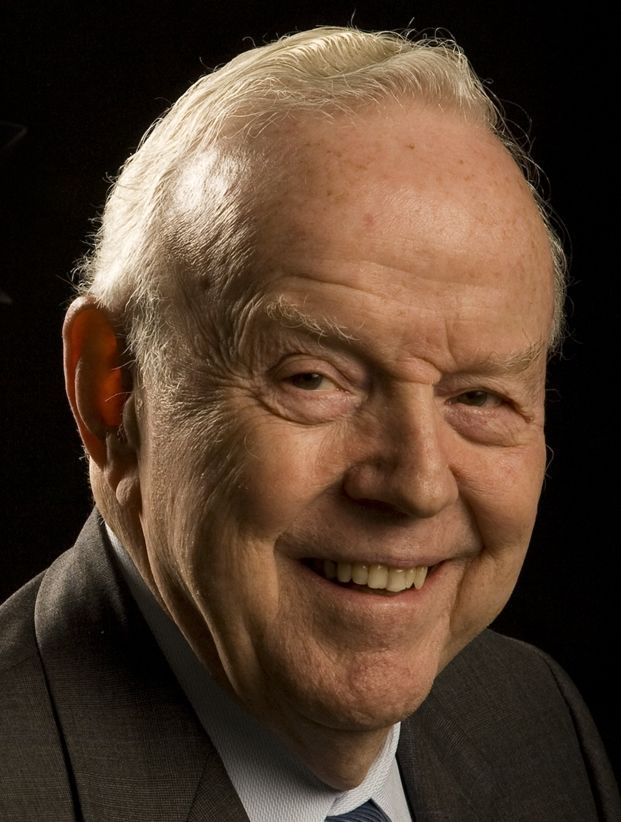Industry Pioneers
Last Name, A-G
Adair, Paul N. "Red" (1998)
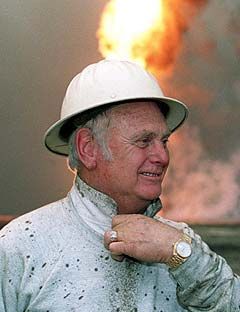 Watch the Video
Watch the VideoRed Adair became for many the symbol of the “can do” attitude of the offshore industry. He worked 14 years with Myron Kinley, the pioneer in oilwell fire and blow-out control, before starting his own world-renowned company. Taking his innovative and practical ideas to sea, Adair led the way to the use of semi- submersible firefighting equipment. He gained international recognition for his work in controlling a series of spectacular offshore blowouts, including the CATCO fire in the Gulf of Mexico in the 1950s, the IXTOC blowout in Mexico’s Bay of Campeche in 1979 and the Piper Alpha disaster in the North Sea in 1988, and in taming the fires of Kuwait following the Gulf War in 1991.
Aliyev, Agha Gurban Oglu (2004)

Aliyev held a doctorate in Geology and Mineral Sciences. In 1945 when offshore started in the Caspian Sea he was charged with the development of appropriate geologic structures. He discovered many of the current oil fields. He was also a well known teacher at the Oil Academy. Later he became the Director of Geology at the State Oil Industry Science Research and Project Institute. He was widely published with 3 textbooks and 150 study works. Aliyev and Yusif Safarov were responsible for the first drilling 25 miles offshore and the discovery made on November 7, 1949 at a depth of 1100 meters. This island complex later covered 4 miles x 4 miles. One was the Offshore Engineer, the other the Geologist responsible.
Assayag, Marcos (2015)
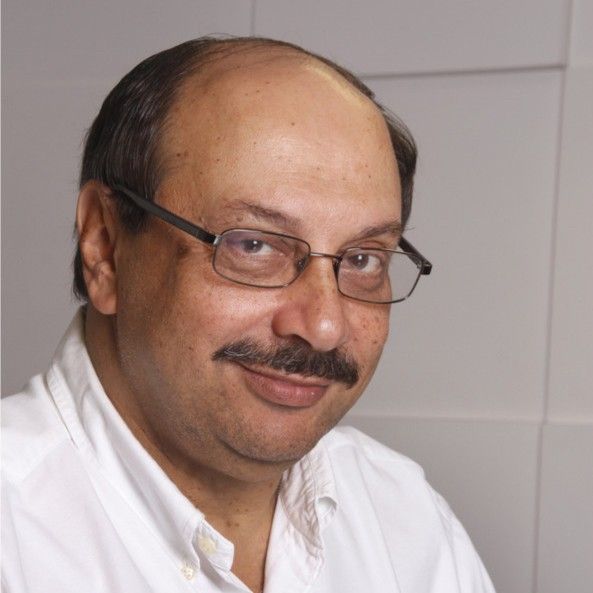
Marcos Assayag is a visionary and a leader who significantly influenced the direction of technology for floating and subsea systems in deep and ultra-deep water, leading to important innovations in the development of offshore oil and gas for Brazil and the world. In late 1980’s, while only in his mid 30’s, he was assigned to lead Petrobras PROCAP 1000 (Production Capability-1000 meters), a technology development program for deepwater production systems. This multi-dimensional, multi technology effort was launched to improve capabilities and skills in deepwater oil and gas production. The initial effort was soon followed by PROCAP 2000 and PROCAP 3000, which Assayag led and managed. Assayag’s management and leadership skills were significant to the success of PROCAP and the resultant increase in Brazil’s offshore oil production. The overall result, at least partially attributable to Assayag’s leadership, is that Brazil became the world’s leading producer of deepwater oil and gas by the early 2000’s. A partial list of PROCAP technological advances in many areas of offshore oil development included flexible and fixed risers, flow assurance technologies, conventional and lightweight moorings for floaters, and subsea separation and processing. Certainly, there were many individual and team contributions by Petrobras employees, consultants and external companies. Assayag’s role, a very capable technologist himself, was to manage the overall extensive work, but even more importantly, to provide leadership in the overall vision and direction of the effort. His vision and leadership reflects his pioneering spirit.
Bailey, H.W. (Bill) (2000)

H.W. “Bill” Bailey was involved in the construction of the first platforms built in the Gulf of Mexico in the early 50’s. First, employed by Humble (Exxon), then by McDermott in New Orleans, he participated in the first use of skirt piles and launching techniques and the start-up and operation of the McDermott Fabrication yard in Morgan City. Under his direction this yard, the first exclusively for fabrication of offshore structures, has grown and been one of the most advanced in the industry and is still in operation today. The leadership provided by Bailey has been responsible for many of the innovative techniques that have been developed for platform fabrication, such as the Bullwinkle Project
Baker Sr., Larry (2017)
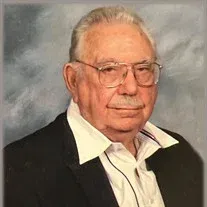 Watch the Video
Watch the VideoLarry A. Baker Sr. was homeschooled in rural Nebraska before joining the Navy and attending school at Northwestern State University in Natchitoches, Louisiana. He returned from duty in the Pacific to marry Miriam Virginia Coulter, have two sons, Larry and Russell and settle in Orange, Texas. Larry spent twenty-seven years with Levingston Shipbuilding Company in Texas and Singapore before he started his own energy enterprise. He began with Baker Shipbuilding and Baker Marine Companies in Ingleside, Texas before he pioneered or purchased twenty other companies. His ability to “encourage common men to do uncommon things” enabled his companies’ successes. With the help of his wife, sons, and countless other men and women along the way, Larry Baker Sr. has developed semis, jack up rigs, cranes, winches and skid units for the energy industry.
Barrow, Thomas D "Tom" (1998)
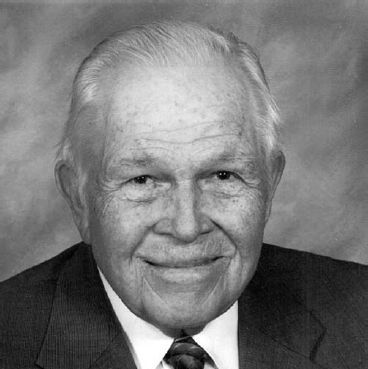
As a geologist for Exxon, Tom Barrow helped extend the frontier of offshore exploration and production to deeper waters throughout the world. He was a leader in Exxon’s developments offshore California, Malaysia, Australia and the North Sea. A prominent spokesman for the protection of the marine environment and the efficient development of ocean resources, he was one of the founders in the early 1970s of the National Ocean Industries Association (NOIA), which grew into the leading trade association of the offshore petroleum industry.
Bauer, Robert F. "Bob" (1999)
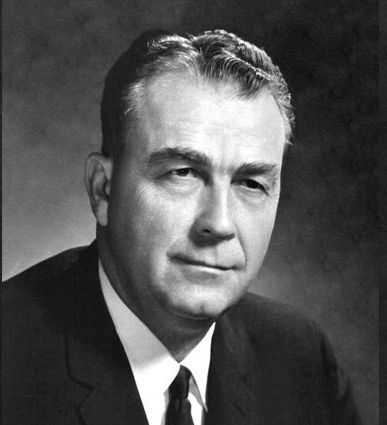 Watch the Video
Watch the VideoBob Bauer was a pioneer in developing the technology of offshore drilling from a floating vessel. Beginning with his assignment to the CUSS Group in 1953, he was first involved with perfecting core drilling from a floating vessel. He then developed the CUSS I, the first true floating drilling rig, which by 1957 had drilled in 400-ft-deep waters. In 1958, Bauer became the first president of Global Marine Exploration Co. His efforts and leadership over four decades led to many innovative accomplishments in offshore drilling.
Baugh, Benton F. (2012)
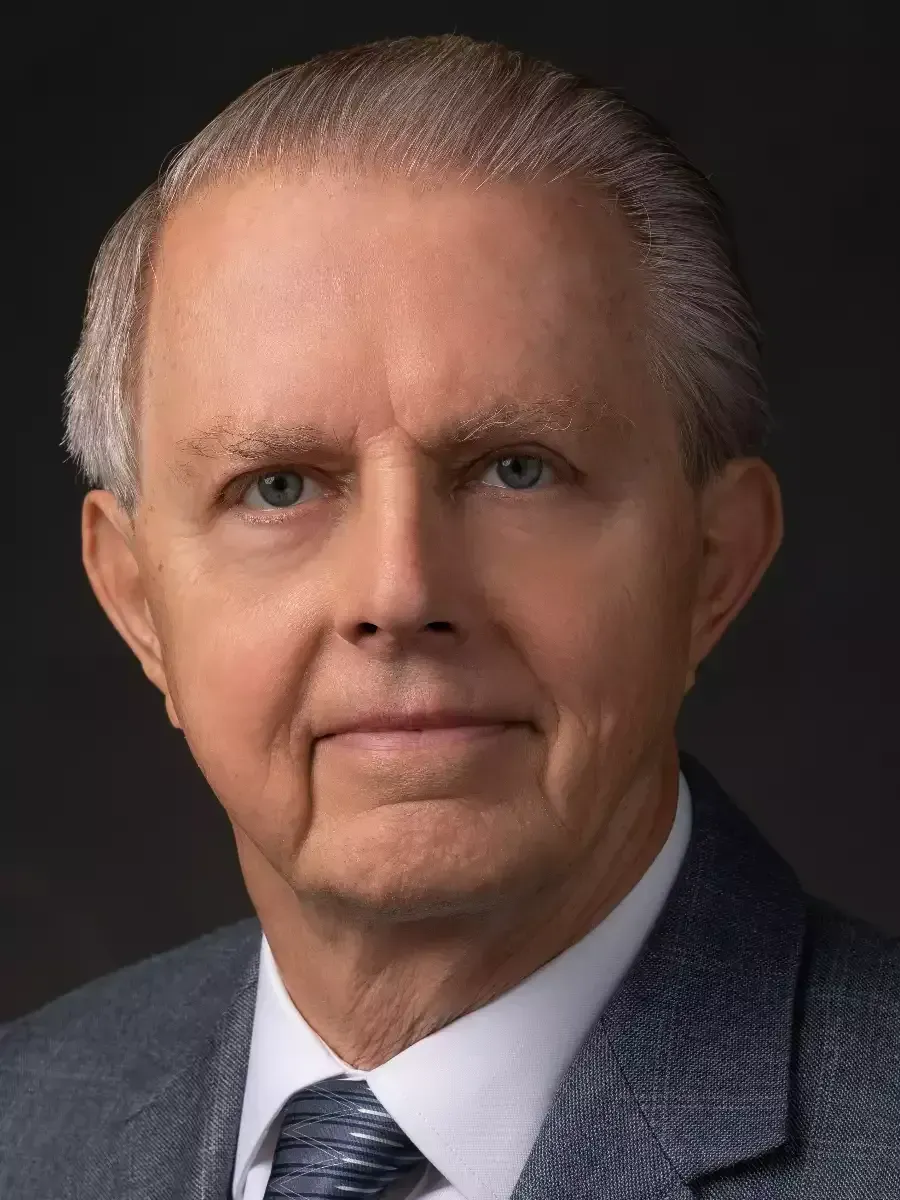 Watch the Video
Watch the VideoBenton Baugh began his offshore energy career in 1959 with the Bowen Tool Company in Houston. 53 years later, Dr. Baugh has received more than 100 patents directly related to the offshore energy industry. Some of these patents relate to improvements in existing technology and others relate to significant direction changes for the industry. In 1970, Benton was the lead engineer on the design of the first guideline-less BOP stack (the Sedco 445). His influence in the development of subsea wellheads and completion systems resulted in the granting of 30 patents. That same year, he also invented and developed low wattage failsafe subsea control valves, reducing the requirement of 85 watts to 2 watts. The first gimballing J-lay tower was invented by Benton Baugh, allowing a vessel to turn into the weather for station keeping and completely revolve for steel catenary riser handoff. Benton also designed the first multi-function ROV profiles issued under API Specification 17D. In 1979, Benton Baugh founded Radoil, Inc. and continues to run the company as its President, designing and manufacturing oilfield and subsea products including the first shearable drill collar. He holds fellowships in ASME and the Marine Technical Society. A member of the National Academy of Engineering, Benton served as an expert witness on subsea blowout preventer systems before the U.S. House of Representatives Committee on Science and Technology.
Beall, Joseph (2010)
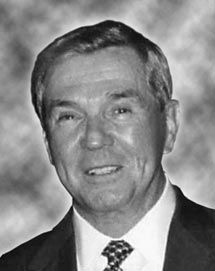
Joseph Beall founded Triton Engineering Services Co. in 1977 as the first economically successful “turnkey” offshore drilling company which was responsible for successfully drilling oil and gas wells regardless of unforeseen obstacles for the contracted client. Joe Beall built Triton into a $200 million dollar company with over 200 employees before selling it to Noble Drilling Corp. in 1994 where he continued to serve as President until 1997. Raised on a poor West Texas cotton farm,he was a star athlete, graduated top of his class and then joined the Air Force. While in college he made the Dean’s List a number of times and also earned membership in the engineering and geology honor societies. After working for Calco, Chevron and Exxon, he formed Triton and drilled in 54 countries providing engineering and turnkey services.
Bexon, Roger (2016)
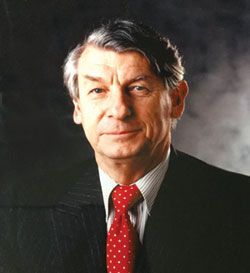
Roger Bexon was awarded the Commander of the British Empire (C.B.E.) in 1985 for his contribution to the UK petroleum industry. He supervised British Petroleum’s entry into the North Sea with the pioneering West Sole Gas Field, the area’s first producing hydrocarbon field. Many innovations were developed during the West Sole project including the first North Sea pipelines and platforms, the development of new pile driving methods, and the design of platforms to withstand Force 12 Wind and Seas without evacuating platform personnel. Bexon graduated from Oxford University and started his career as a geologist and petroleum engineer in 1946 with the Trinidad Development Company. Subsequently, he held management positions in the Middle East, Libya and the United States. He was a director and senior vice president of Standard Oil of Ohio during the development of the North Slope of Alaska. He served as managing director of the British Petroleum Company from 1981 to 1986 and was deputy chairman from 1983 to 1986. Before his death in 2014, Roger Bexon contributed to many publications on technical oil and energy matters. Born 11 Aril 1926 London, UK Died 4 March 2014 BA Geology University of Oxford 1945 MSc Petroleum Engineering University of Oklahoma, Tulsa 1950.
Bookout, Jr., John F (2001)

John F. Bookout, Jr. pledged his career and the future of Shell to deepwater oil and gas development. He began as a geologist and was a pioneer in understanding the potential of oil and gas reserves especially in the Gulf of Mexico. In 1967 as exploration manager for Shell, he aggressively led their acquiring a leading position in offshore leases, which proved fortuitous. Later, as president of Shell Oil US, he provided the direction to develop the geologic and mechanical technology required to lead the industry into oil and natural gas exploration and development in waters deeper than 1,000 feet.
Boyadjieff, George (2007)
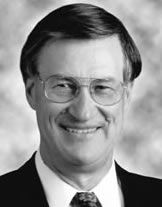
George Boyadjieff is a leading developer of offshore drilling technology, and has been awarded more than 50 patents over the past 30 years. He is best known as the inventor of the Top Drive Drilling system. This system has made a step-change in drilling efficiency and has been credited with enabling the construction of many wells previously believed to be undrillable. The top drive drilling system rotates the drillstring directly from the derrick and is permanently connected to the mud circulating system and the traveling block. This allows drillpipe to be introduced in multijoint stands, resulting in greatly improved drilling efficiency and safety. Top Drives also improve operational performance while drilling highly deviated or horizontal wells and when running casing.
Brown, George R. (1999)

George Brown complemented his brother’s construction expertise with his business acumen. Known as an idea man, George joined the company in 1922 and helped it gain its “can-do” reputation by negotiating many successful government industrial design and construction projects around the world. Following World War II, the company applied its considerable expertise to oil industry projects. The most interesting project was Project Mohole intended to probe the earth’s crust. Not only did this create the technology for deep well drilling, but its contributions to deep water drilling, station keeping, riser behavior and semisubmersible hull design were immeasurable.
Brown, Herman (1999)

Herman Brown founded Brown &; Root in 1919 and led the company as president and CEO until his death in 1962. Originally a road-building enterprise, during World War II the company built ships and developed a strong marine design and fabrication capability. Following the war, Brown &; Root applied its experience to the offshore oil business, building the Kermac 16 in 1947, the first platform to drill for oil out of sight of land. The company became a leader in offshore pipelines, platforms and modular deck packaging with many compressor packages installed in Lake Maracaibo in the 50s and 60s.
Brown, Robert J. (2008)
Watch the VideoDuring his 57-year career, R. J. Brown was known for his innovations that made marine pipelining more efficient and much safer. Among these were development of a third-generation vessel capable of double-joining 40-ft sections and a retractable stern ramp improving the efficiency of pipe lay operations. In the Arctic, he built a 2D modeling system for development of the installation methods and procedures and a remote diverless connection system.
Brown pre-assembled 10-mile long pipelines, then bottom-towed them into position offshore. He designed and built some 15 full scale plows, for trenching and burial of subsea pipelines. Later, he applied his engineering skill to design installation techniques for ultra deepwater lines to 8,000-ft water depth. These included 3-D physical models that helped engineers design pipelines efficiently for specific applications. One of Brown’s key accomplishments was the use of a highly accurate 3-D physical model for training contractors’ personnel by demonstrating the hazards during installation of large complex systems with many risers and mooring lines.
Bush, George H.W. (2001)

George Bush brought his unique vision and entrepreneurial spirit to offshore drilling, founding Zapata Offshore Co. in 1955. He astutely ordered an unproven Le Tourneau 3-legged jackup rig, the Scorpion, which was only the sixth jackup rig in the world. In 1957 he introduced the Vinnegaroon, the 7th jackup in a worldwide fleet of eight. Bush ordered 3 NOLA drillship conversions in 1959 when there were only two other full-capability floating rigs. In 1962, the Zapata drillship Sidewinder entered service. Only one other floater had entered service since 1959. One of the early offshore risk takers, Bush played a key role in enabling these developments by creating the organization that made them work.
Candlish, Tom (2005)

Tom Candlish graduated from Glasgow University (Scotland) in 1951 after serving his country in the Royal Engineers. Posted to Borneo by his employer, George Wimpey & Co., Candlish oversaw installation of the first offshore hydrocarbon structure in the South China Sea for Brunei Shell in 20 ft of water. Later, he installed the first offshore loading line and buoy at Miri, Sarawak, also for Shell/In 1958, Candlish installed the first offshore hydrocarbon structures in the Arabian Gulf in waters starting at 40 ft deep and extending to 60 ft deep. He also installed the beach approach for the offshore pipelines at Das Island in Abu Dhabi in 1961. In 1964-65, Candlish supervised fabrication of offshore platforms at Port Harcourt, Nigeria. From 1971, as a Director of George Wimpey &; Co., and Board Member of Highland Fabricators, he oversaw many North Sea deep water projects including the construction of BP’s Forties and Magnus platforms and Conoco’s Hutton TLP. He is a Fellow of the Royal Academy of Engineering and of the Institution of Civil Engineers (UK).
Childers, Mark A. (2013)
 Watch the Video
Watch the VideoMark A. Childers is an engineer, manager, inventor and pioneer in the development of offshore drilling and production. Born in Columbus, Ohio, he was raised in Arlington, Virginia. After high school graduation, he went to Virginia Polytechnic Institute (now Va. Tech). A member of the Corps of Cadets for two years, he co-opted through school, graduating with a Bachelor of Science in 1964. Via a National Science Foundation (NSF) scholarship, he then earned a Master of Science degree in Civil Engineering in 1965. He joined Humble Oil & Refining Co. (now ExxonMobil) as an engineer in the offshore oil and gas business in New Orleans, Louisiana upon graduation from college. At that time the offshore oil and gas industry was only 12 years old, but developing rapidly. Humble provided an outstanding training ground via assignments at the division level, headquarters and at its research center (Esso Production Research Co.). An abundance of field work and classroom instruction laid the groundwork for his engineering skills, allowing him to develop wellbore cementing techniques, innovative workover units and floating drilling technology. This latter group included deepwater spread mooring systems, floating drilling well techniques and hardware, marine riser systems, and Mobile Offshore Drilling Unit (MODU) designs and operations. He holds 12 domestic and international patents covering mooring hardware, tubular handling concepts, cementing of oil wells, submersible rig station keeping via suction piles, buoyant towers and subsea BOP control.
Clements, Governor William P. (2000)
 Watch the Video
Watch the VideoW.P. Clements is a distinguished offshore pioneer and statesman. As an engineer and entrepreneur, he started Southeastern Drilling (SEDCO) in 1947 onshore, but quickly applied his vision and technology skills to take his company offshore, tackling the world’s toughest roughest and deepest ocean environments. SEDCO grew from two rigs operating in 10 ft of water in 1954 to 50 rigs operating in 100 to 15,000 ft of water depth in 1985. Clements’ vision became reality because he selected the right people and then gave them the responsibility and authority to accomplish his goals. P. Clements served as Governor of Texas. He has given a lifetime of service to the Boy Scouts of America, and the IADC.
Cloyd, Marshall P. (2010)
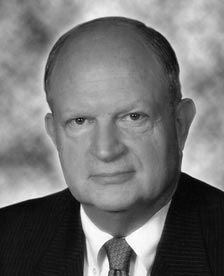 Watch the Video
Watch the VideoMarshall P. Cloyd began his offshore energy career in 1966 working as a field civil engineer for Brown &; Root on the installation of two ice and earthquake resistant platforms in Cook Inlet, Alaska. After additional experience in the Gulf of Mexico he then proceeded as Project Manager to supervise the installation of several deep water earthquake resistant platforms in Santa Barbara Channel, California. In 1971 he was assigned to in the North Sea, during its most intensive construction period, to concentrate on derrick and lay barge operations in extremely rough seas which involved model testing and developing procedures for sea conditions that had not been experienced by the industry up to this time. After a period of platform installation projects in South East Asia he returned to the North Sea in 1975 and in key management positions concentrated on the development of several major fields including Statfjord. In 1982 Marshall founded InterMarine Incorporated where as Chairman he has worked and continues to work on marine transportation projects in over 40 countries for many of the offshore industry companies.
Collipp, Bruce G. (1998)
 Watch the Video
Watch the VideoBruce put his training in naval architecture to good use in more than thirty years with Shell, USA. he and his colleagues developed a reputation for leadership in offshore technology. Collipp, inventor of the semi-submersible drilling rig, with coworkers Ronald Geer and Douwe Devries, made major contributions to the creation of semi-submersible drilling technology. Their work on Bluewater I in the 1950s and 1960s paved the way for the creation of a new generation of mobile drilling vessels capable of operating in deeper and deeper waters.
Crooke, R. Curtis (2001)
 Watch the Video
Watch the VideoR. Curtis Crooke led the technical development of CUSS 1, the first floating drilling rig with automated pipe handling, riser tensioners, and a stabilized traveling block. It set records for coring off the Galapagos Islands in the early 1960’s. Crooke helped develop the DPDS Glomar Challenger used for the Deep-Sea Drilling Project. Cores recovered from 4,300 feet to 23,000 feet of water improved our understanding of plate tectonics. He was also a key figure in the top-secret Jennifer Project, using the DPDS Glomar Explorer. Originally advertised as a venture to recover manganese nodules from the ocean floor, it actually recovered a Russian submarine from 16,000 feet of water off Hawaii.
Curutchet, Jean (2007)
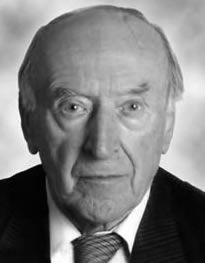
Jean Curutchet was awarded the Legion of Honour, Knight Class, by the French government for one outstanding achievement—the raising of the Ekofisk Field production facilities offshore Norway. Ekofisk was one of the first fields discovered in the North Sea. In 2006, its remaining recoverable reserves were estimated at 1 billion bbl of oil. But its life was nearly cut short because subsidence was causing the platforms to sink. Curutchet led and supervised the major task of raising the entire field’s facilities 20-ft (6-meters), a monumental engineering feat. Five platforms, comprising about 80,000 tons, were raised at once— a Guinness record. Curutchet had a distinguished career with Elf Aquitaine Petroleum Co. that included responsibility for killing the Gassi-Touil #2 well blowout in Algeria. He also directed the Frigg Gas Field in the North Sea and was named to the Order of Commander of St Olaf by the Norwegian government.
Danielson, Otis (2009)
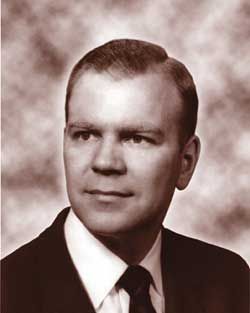
In 1946, Kerr-McGee Oil Industries and partners Phillips Petroleum and Stanolind Oil &; Gas, delineated a salt dome in the Ship Shoal Block 32 located about 12 miles offshore in 14 ft of water in the open Gulf of Mexico. Danielson was the Kerr-McGee drilling engineer on the well team that planned and drilled the Ship Shoal well which obtained a depth of about 1,700 ft. Early work showed that with Gulf weather conditions, a tender-platform drilling method would be better suited than the large wood piling platforms normally used to drill in open water. A tender-platform could be towed to a safe harbor should a hurricane occur and it was believed a companion steel platform, fixed with pilings, could withstand such storm conditions. The well team designed the tender-platform rig for drilling in deeper water and for the effects of high winds and rough seas. The drilling and completing of this well is considered to be the event that gave birth to the modern offshore drilling industry.
Delauze, Henri G. (2003)

The founder of COMEX and its world-renowned subsea services in 1961, Henri Delauze anticipated the oil industry need for deep diving assistance and created a hyperbaric experimental center. Here scientists and engineers could study the effects of pressure on divers and develop new subsea techniques. He personally participated in the first dives with helium at depths of 335m and 360m during which the high-pressure nervous syndrome was discovered and described. Under his leadership COMEX developed many of the technologies now used by all the offshore industry such as the diving spread configurations, hyperbaric welding, cold and hot tapping, abrasive jetting and underwater NDT.
Delong, Leon B. (1998)

Leon DeLong worked with the U.S. Army Corps of Engineers during World War II designing temporary platforms for military use. After the war, he developed the concept of a jackup platform which the Army used to solve logistical problems in Thule, Greenland. In 1952, he formed the DeLong Corporation which became a key producer of jackup barges and drilling rigs for the offshore industry. he also helped construct the Texas Tower, an early offshore radar station off the Georges Banks in the Atlantic Ocean.
Dunham, Archie W. (2006)

Born in 1938, Archie Dunham was raised in Oklahoma. He was a distinguished graduate of the University of Oklahoma earning a bachelor’s degree in geological engineering. After graduation, he served his country in the United Stated Marine Corps before returning to his alma mater for his MBA. Finishing at the top of his class, Dunham was aggressively recruited by several leading companies, and decided to join Conoco, reporting to its Houston office in 1966. Over the next 30 years, Dunham rose through the ranks at Conoco. He was elected president and CEO in 1996 and was instrumental in orchestrating the separation of Conoco from its then parent, E. I. du Pont de Nemours & Company. In 2002, after his election to Chairman and CEO of Conoco, Dunham engineered the merger of Conoco and Phillips Petroleum. The new company, of which he retained the title of Chairman, is the fifth largest corporation in the US. Dunham retired in 2004. Early in his distinguished career, Dunham recognized the potential of offshore, and steered his company to a strong position as one of the world’s leading developers and producers of offshore hydrocarbon resources. Numerous honorary doctorates and awards attest to his business and civic leadership, and his counsel is sought on national and local boards, including the President’s Commission on White House Fellowships and the President’s Commission on Critical Infrastructure.
Elkins, Hubert L. (Hugh) (2013)
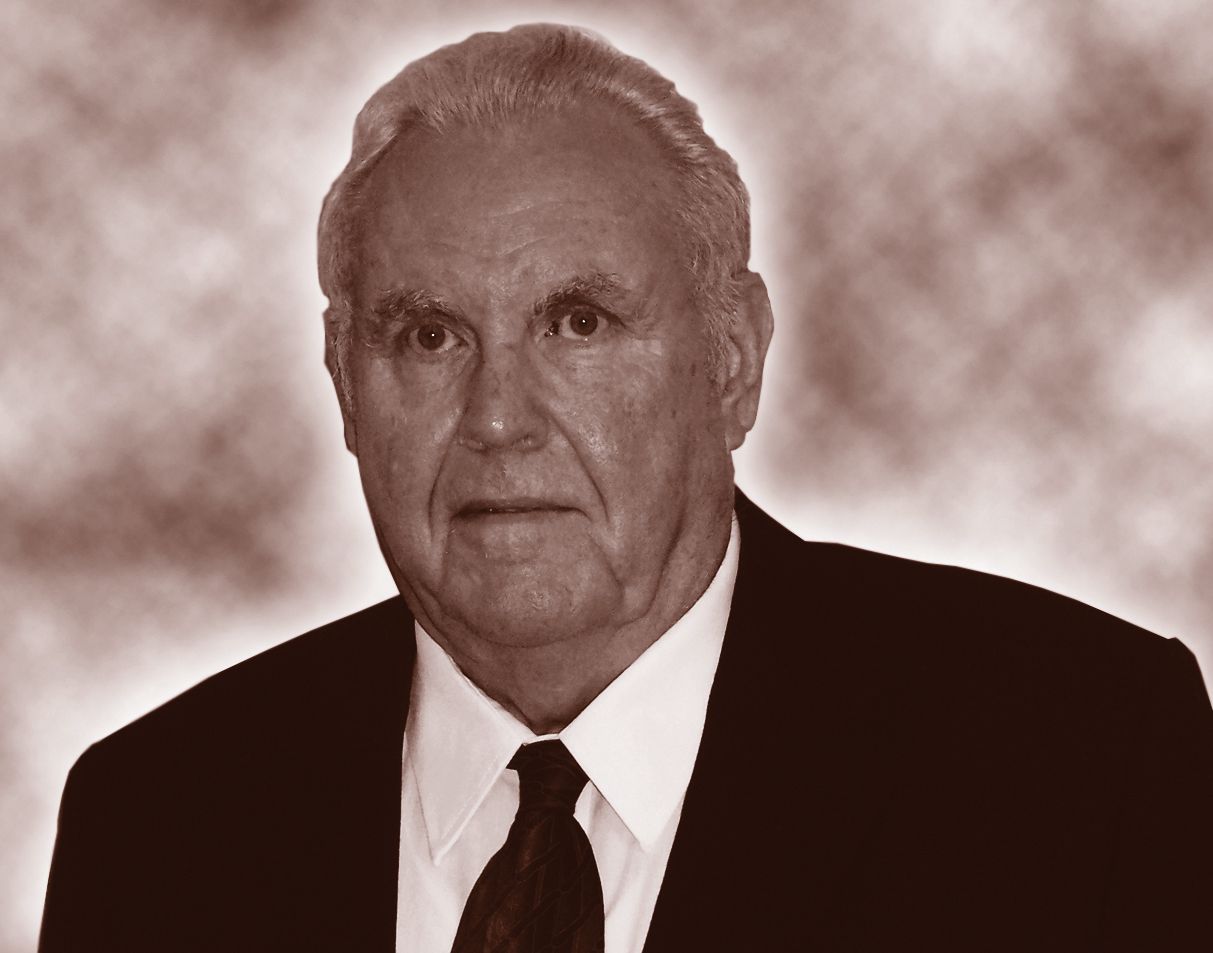 Watch the Video
Watch the VideoHugh Elkins is a celebrated pioneer for his individual contributions in more than 53 years of professional service in the offshore oil industry. Early in Hugh’s engineering career with S&R Tool and Supply Company, he designed and built the 6-ft radius technology for subsea wellhead guide bases and BOP stack guide frames that continues today as an industry standard, permitting the interchangeability of subsea equipment. By one measure, his technical engineering patents over an 18-year period have over a hundred citations from his original dozen patents. In 1980, Hugh joined HYDRIL, serving in a number of executive management and engineering posts before retiring in 2000. Hugh subsequently served as Director of Business Development for National Oilwell Varco before retiring in 2009. Visionary leadership and technology has always been Hugh’s continuous high mark, discovered in his offshore pioneering journey. At the 2010 Offshore Technology Conference Awards Luncheon, Hugh was honored with the individual distinguished achievement award for his role as a “subsea innovator.” “I got to witness, in 1969, the mess made on the beaches along the Santa Barbara channel caused by a blowout,” said Hugh. “This made me want to get involved in designing equipment to keep this from happening.” At the time of his OTC award, then-IADC president, Dr. Lee Hunt, said that Hugh created a “sense of common purpose” for the industry. In the ‘80s, Hugh served on the National Council for U.S. – China Trade. He made trips to China representing HYDRIL and the Council. Additionally, for over a half a decade Hugh led the various committees of OEC’s Hall of Fame Initiatives with distinction. In particular, he refined the process for recognition of industry pioneers and technology pioneers during their lifetimes.
Flowers, Billy S. (2003)
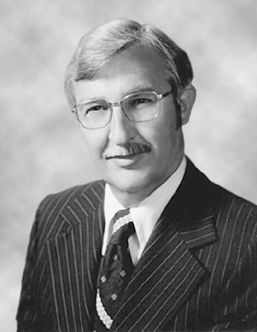
Billy played a major role in Shell’s fabulous exploration success in the Gulf of Mexico. His leadership in essentially every lease sale and the following exploration drilling program from 1965 to 1985 gave Shell a competitive advantage in discovering billions of barrels of oil and gas. A realistic optimist with a passion for development and fast application of new technology, Billy led in the application of Bright Spot technology and the push into deep water where Shell was the frontrunner and the leading producer. Throughout his career he has been widely respected for both technical expertise and good business judgment.
Foster, Joe B. (2004)

After graduating with petroleum engineering and business degrees from Texas A&M, Joe Foster worked at Tenneco for 31 years holding various positions in exploration, production and strategic planning. He was involved with its Gulf of Mexico operations from 1959-1988. While rising to President of Tenneco Oil’s E&P business unit, Foster guided the Company’s development into one of the most successful exploration companies in the Gulf of Mexico. After Tenneco sold its oil properties in 1988, Foster founded Newfield Exploration Company, and began acquiring leases and reserves at a time when activity in the Gulf was languishing. Newfield, in 2004, is the 12th largest operator of production in the Gulf, holds 250 leases on the shelf, 85 in Deep Water, and ranks as one of the most active drillers in the region.
Fox, Sr., Beldon (2008)
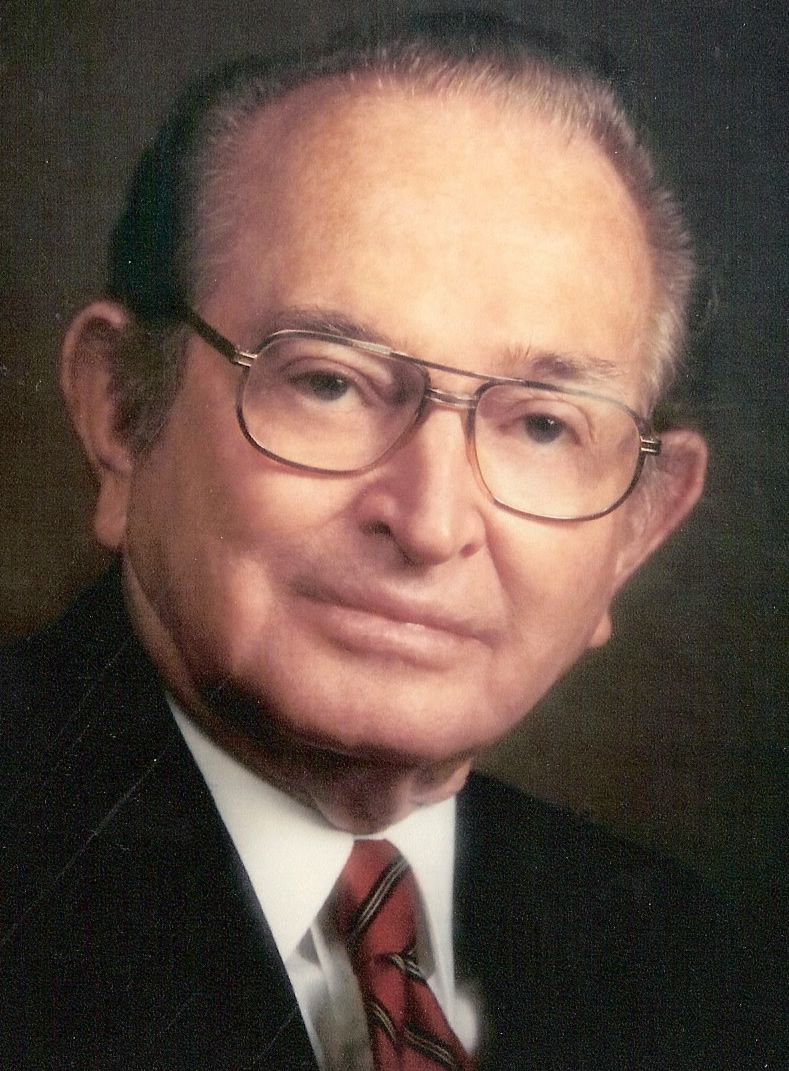
Beldon E. Fox, Sr., owner of Red Fox Industries in New Iberia, Louisiana, was responsible for solving one of the offshore industry’s most pressing and unique problems of the 1970s: handling sewerage from all offshore manned rigs, platforms, workboats etc. Under an EPA order, all such facilities had to be provided with a Marine Sanitation Device (sewer treatment equipment) under threat of having to shut-in operations. Oversight was provided by the U.S. Coast Guard. At the time, no such equipment existed and even experts in the field deemed the problem insolvable. The Red Fox Unit developed by Fox and his team became the industry standard and for many years was the only device that met Coast Guard requirements. At one point, over 3,000 installations were in service worldwide with the company ultimately serving 85% of the U.S. market and a large share of the overseas market.
Frankhouser, Homer S. (2009)
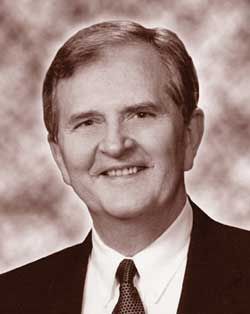 Watch the Video
Watch the VideoFrankhouser’s offshore career began in 1970 with Dravo Ocean Structures strengthening structures in the Bay of Campeche for PEMEX. After forming a joint venture with Ocean Structures de France, he worked on completion of the world’s first articulated tower in the Bay of Biscay. He worked for Brown & Root (UK) as Deputy Project Manager in 1973 and later Sr. Project Manager of BP’s Forties Field, the first deepwater offshore platforms in the British North Sea. Over the next several years, he assumed managing responsibilities for various international operations including Conoco’s Hutton tension leg platform, British Gas Morecambe Bay project in the Irish Sea, and several other North Sea projects. Since 1992, he has served as President of Frankhouser & Associates providing services and senior personnel to worldwide companies.
Freife, Wagner (2012)
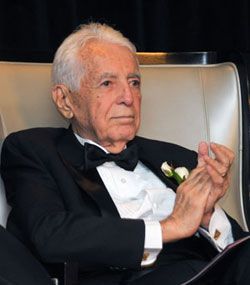
Wagner Freire’s career in the oil industry began in 1960 as a geologist on a Petrobras surface mapping crew in Bahia’s Reconcavo Basin. In 1965, he participated in Le Petrole et la Mer (Petroleum and the Sea) conference in Monaco, considered a breakthrough conference on the eve of the opening up of a new exploratory frontier, the North Sea. After subsequent assignments in seismic acquisition, interpretation, and data processing, Wagner was appointed Chief Geophysicist of Petrobras in 1968. In this role, he led the company’s move into the Brazilian continental margin with state-of-the-art seismic surveying, processing and interpretation technologies. Wagner’s interaction with the majors is credited with moving the company into the international arena, and by the mid-1980’s, his initiatives are credited with Petrobras’ successful early presence in the Middle East. In addition, his pioneering leadership was instrumental for Petrobras to compete or be associated with the majors in the North Sea and the Gulf of Mexico. Shortly thereafter, Petrobras realized the need to compete in the deepwater exploration arena and adapted the approach used in the Argyll Field (the first field developed in the British North Sea). More innovation followed, culminating in the discovery of the giant (approx. 130 square miles) Marlim field in 1985 offshore Rio de Janeiro. Friere led the company in this process. Upon retiring from Petrobras in 1992, Wagner joined Deltaserve, a Brazilian service company. He became a member of an advisory group consulting with the Brazilian legislature concerning pending elaboration of its petroleum law and Brazil’s oil sector future. In 1996, Wagner received the Special Commendation Award of the Society of Exploration Geophysicists.
Funkhouser, Larry (2002)

After receiving an MS in Geology from Stanford University in 1948, Larry Funkhouser enjoyed a rewarding career at Chevron. By 1963 he managed their Gulf of Mexico exploration efforts including lease acquisitions. In 1966, Funkhouser was appointed Vice President of West Coast operations and led participation with Humble and Atlantic Richfield in California’s first federal offshore sale. From 1977 until his retirement in 1986 he was Director and Vice President of Exploration and Production and continued to be responsible for worldwide exploration. He truly was a leader in worldwide offshore exploration around six continents.
Geer, Ronald L. (2002)

After graduating from Georgia Institute of Technology, including two years active duty in the U.S. Maritime Commission, Ron Geer joined Shell for an outstanding career in development and application of deep-water technology. Heavily involved in some of the earliest floating vessel drilling and underwater wellhead designs, he grew to become a widely known and highly respected consultant at Shell's head office. Recipient of the Offshore Technology Conference Distinguished Achievement Award in 1984, Geer was highly influential in achieving a cooperative spirit among industry, science and government. His work as President of the Marine Technology Society was exemplary.
Goins, Dub (2005)

“Dub” Goins is recognized for his pioneering achievements in offshore well control. After graduating from Texas A&M with a degree in Chemical Engineering, Goins joined the US Army Chemical Corps, where he served for the duration of WW II. In 1946, he joined Gulf Oil Corp., where he worked until 1979. Goins was the first to apply science and analysis to the art of well control. Unsatisfied with the “trial and error” approach used at that time for handling kicks, he wrote a series of equations that described kick phenomena and developed the fundamental principle of constant bottomhole pressure. He further developed his observations and equations into three well-control methods: the Concurrent Method, the Drillers’ Method and the Weight-and-Wait (Engineers’) Method. Goins added basic techniques such as measuring slow pump rates and choke line pressure losses, as well as using casing pressure to start the pumps during a kill operation. Goins’ techniques form the foundation for modern well control methods and are described in several landmark publications. His methods are the basis of current training courses and virtually all well control training simulators. Being able to simulate realistic well control situations enables drillers to be trained to conduct safe offshore operations, where there is no second chance to correct a bad decision. Goins’ proven methods reduced offshore drilling risks to acceptable levels. For his pioneering work in well control Goins was awarded the SPE’s prestigious Lester C. Uren Award. He was also elected to the National Academy of Engineering in 1990.
Goldman, Jerome L. (1998)

Trained in naval architecture, Jerome Goldman became a pioneer in many aspects of offshore design and engineering. After working with Chevron and other companies, Goldman and Cdr. V.H. Friede created Friede and Goldman Ltd., which became an international leader in ship and offshore rig design. Goldman contributed to the design of the first jack-up rig in 1952, and continued his innovative work on jack-up rigs, submersibles, semi submersibles and catamaran drillships.
Gonzalez, Alfonso Barnetche (2001)

Alfonso Barnetche Gonzalez is recognized for his leadership in the development of Mexico's offshore oilfields. In 1935, he received Petroleum Engineering degree #1 from the Universidad Nacional Autonoma de Mexico. In 1959 he directed the drilling of the first offshore Mexico discovery in the Santa Anna Field in the Gulf of Campeche in 13 meters of water. Eventually 70 wells were drilled in the field with 40 becoming producers. After leaving PEMEX in 1964, Barnetche's company actively participated in developing the Cantarell Field, which became the world's second largest offshore field. Under his direction, more than 100 offshore platforms and 1000 miles of subsea pipelines were designed and installed.
Green, Cecil H. (1998)

With a master’s degree in electrical engineering from MIT and experience at General Electric and Raytheon in the early 1930s, Cecil Green joined the newly-formed company Geophysical Services, Inc. There he developed the field of reflection seismology, which revolutionized the use of geophysics in the search for petroleum. His path-breaking work helped his company evolve into the giant Texas Instruments Inc. Green also is remembered for his generous support of education and research programs at universities throughout the world.
Guy, Arthur Lee (2002)

Joining Humble in 1948, Arthur Guy helped design early Gulf of Mexico platforms. He developed open water marine structure technologies and upgraded technologies for pile foundation design and wave force prediction. One of the most influential members of the API Offshore Committee, Guy was a major contributor to the industry standards that serve as the basis for governmental regulations for fixed platforms. As head of Exxon's Design Office, he was responsible for approval of concept and final design for more than 100 Gulf of Mexico platforms and California's Hondo platforms.
Last Name, G-O
Haeber, John A. (2011)
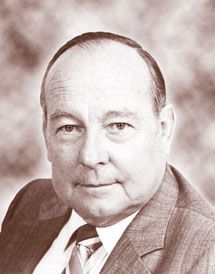
John Haeber began his offshore energy career in 1952 with Shell Oil Company and became involved in the birth of floating drilling technology in the Pacific Coast area. He was transferred to Houston in 1954 where he developed advanced technology, concentrating on subsea wellheads and hydraulic connectors. John’s team’s development work resulted in the conversion of a submersible into the world’s first semisubmersible MODU in 1961. In 1964, John joined Ventura Tool Company (later Vetco and now GE Oil and Gas). There, he helped develop the MOBOT drilling and completion system, a new generation of drilling risers, BOP frames and wellheads for drilling in the Santa Barbara Channel, the first large bore BOP stack and wellhead system, one of the first subsea production systems and the industry’s first drill string motion compensator. John Haeber was one of the key individuals that helped develop what is now a highly sophisticated subsea drilling and completion industry worldwide and the backbone of deepwater E&P.
Hammett, Dillard S. (2001)
 Watch the Video
Watch the VideoAfter graduating from The University of Oklahoma as a Civil Engineer in 1954, Dillard Hammett joined Shell. For the next 45 years, Hammett led projects that developed dynamic stationing and floating production technology involving ultra deepwater activities. These projects involved working safely and efficiently under harsh sea conditions, with unstable seabeds and in deepwater. Hammett pioneered techniques to drill and produce in ice and iceberg-covered oceans. Among his many innovations were structures to withstand the Cook Inlet ice, current and tides. He also invented numerous improvements to drillships and semisubmersibles, floating production platforms and ocean floor scientific coring and sampling using dynamic station-keeping.
Handelman, Lad (1999)

Lad Handelman worked as a hands-on diver offshore California from the early 1960s. At the time 75% of all diving work off the California coast was oil and gas related. Teaming up with World Wide Divers and a Canadian firm Can-Dive, Handelman merged his small business, California Divers with the others to form Oceaneering International. As president and CEO, Handelman oversaw several major innovations in underwater technology including deep diving decompression techniques and atmospheric diving suits for drilling, construction and production operations. These innovations have had a significant impact on the development of offshore industry.
Hare, Donald S. (2009)
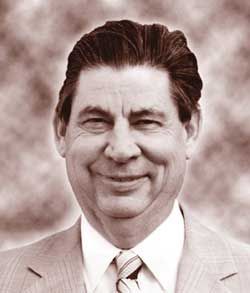
Donald S. Hare’s career spanned nearly six decades in the oil exploration industry. His early achievements include drilling the discovery well on the Jacalitos field in California and the Ellenberger field in West Texas, development of the Four Bear Anticline in Wyoming and the design and development of the Monterey – Texaco Seal Beach California offshore production island which was the first successful offshore production in California. His pioneering work included the conception and implementation of early exploration vessels Nesco I, and Western Offshore I and his involvement in the design of the first Pacific Coast “Jackup Drilling Unit” – named “De Long Jacks.” Later this jackup was converted to the first ever jack up offshore production facility. Over the last thirty years of his distinguished career there were many other innovative accomplishments including his innovative work with commercial diving in offshore development, the triple zone completion and the design, installation, and drilling operation of the Zapata EB 110 Platform A in 600 foot water depth.
Harris, Leldon M. “SIG” (2015)
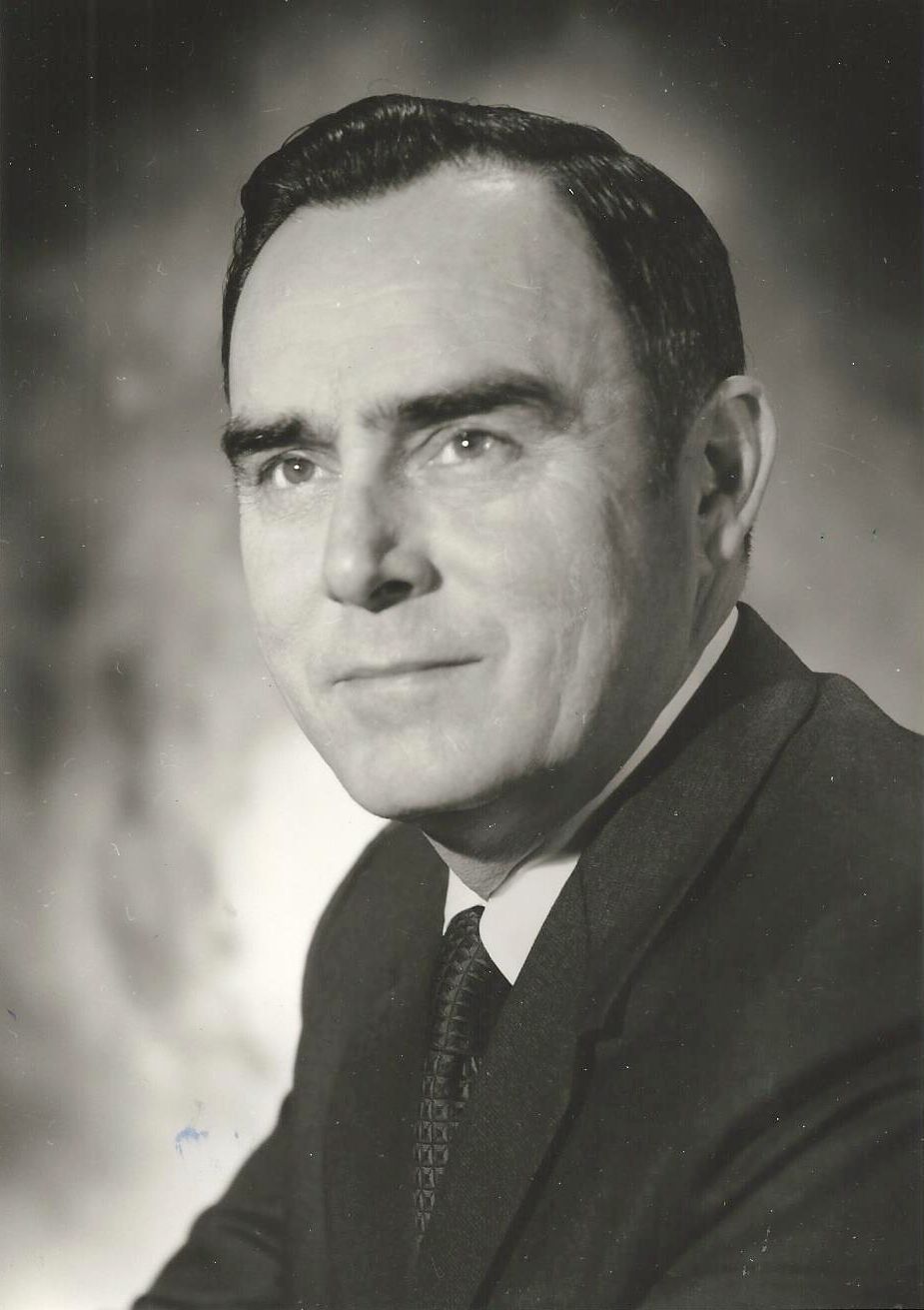
Leldon M. (Sig) Harris graduated from Texas A&M in mechanical engineering and went to work for Humble Oil & Refining Co. (now ExxonMobil USA) in 1949. At the time, coring from floating vessels had just begun and several companies were determining how to do it. After a California lease sale in 1954, the first floating rig with well control equipment on the ocean floor drilled and cored a well. In 1956 Harris helped develop floating drilling technology that resulted in the Humble SM-1 rig. In the mid-1960s, leases were sold in the Santa Barbara Channel. Humble obtained a large number of leases without having perfected the technology to drill them. As the company’s Western Division Drilling Engineer, Harris led a design team during 1968-1970 to develop new equipment and operating procedures to drill in water depths up to 1,500 ft. New moorings, marine risers, subsea blowout preventers and their controls, wellhead systems, hydraulic connectors, and drill stem testing equipment and procedures were among the many technologies developed that Sig Harris led and managed. In 1970, Harris left Humble and wrote the first book on floating drilling entitled “An Introduction to Deepwater Floating Drilling Operations”. Harris consulted and lectured around the world and developed and presented the first industry training course on Deepwater Drilling. In 1979, he published his second book, “Design for Reliability in Deepwater Floating Drilling Operations.” Both books are considered pioneer books and even today are considered excellent reference material.
Hayward, John T. (2001)

John T. Hayward began his oil industry career in Europe in 1913 where at the age of 23, he was a tool pusher on the first rotary-drilled oil well in Europe. He was primarily an engineer and inventor and spent much of his life in the oil industry. In 1948, while working as chief engineer for Barnsdall Oil Company, he invented and designed the world's first movable offshore drilling barge for protected waters, the submersible Breton Rig 20. This rig was designed for operation in 20 feet of water and worked successfully until retired in 1968.
Heerema, Pieter S. (1998)

Born in Amsterdam, Pieter S. Heerema left lasting marks on the international offshore industry. He first came to prominence in the 1950s in Lake Maracaibo, Venezuela, where he pioneered the use of prestressed concrete piles that proved ideally suited for the demands of the region. In the early 1960s, he returned to his native Holland and became an early leader in North Sea construction. He led the way in the development of giant semi-submersible derrick and lay barges which revolutionized offshore construction by allowing for the design and installation of much larger platforms
Horton, Ed (2008)
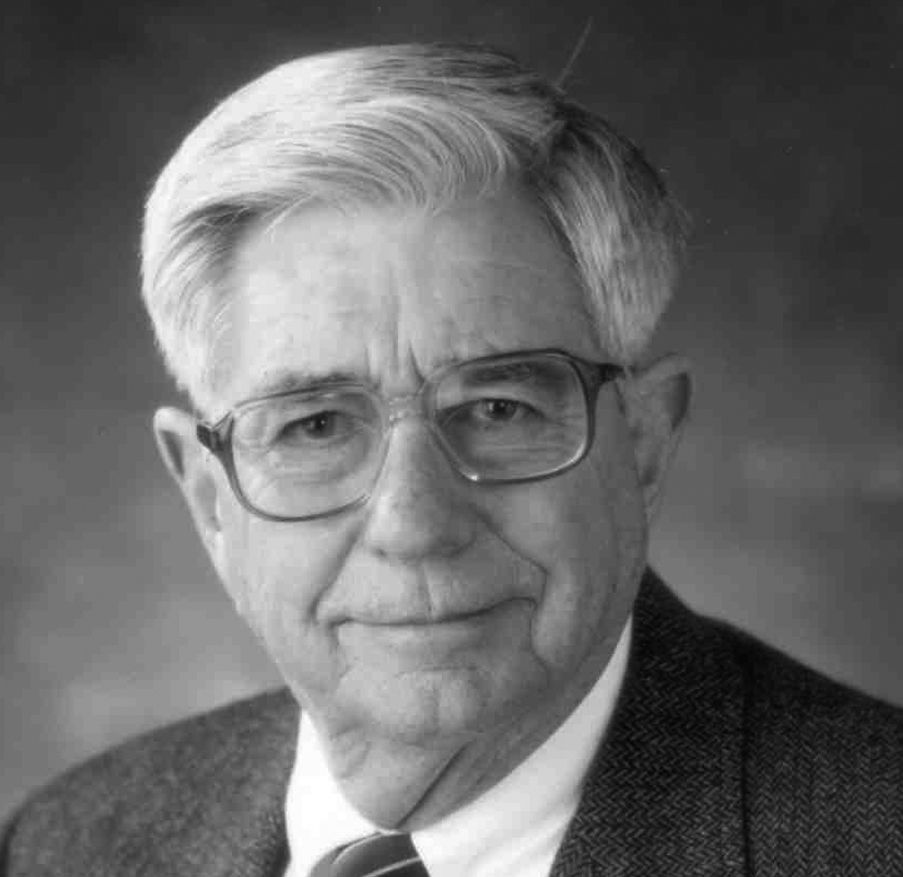
Edward E. (Ed) Horton, currently president and board member of Horton Deepwater Development Systems, is the inventor of both the Spar and Tension Leg Platform drilling and production units, the two standard deepwater concepts that represent the vast majority of deepwater floating oil and gas facilities in service today. Over the past 30 years, more than two billion bbls of oil have been produced through facilities that incorporate on his patents. By year-end 2008, 17 production spars will be in operation, 16 in the Gulf of Mexico and one-off Malaysia. Horton is a member of the Society of Petroleum Engineers (SPE) and the National Academy of Engineering and has been previously honored for his accomplishments by the Offshore Technology Conference, the National Academy of Science and SPE.
Huff, John R. (2011)
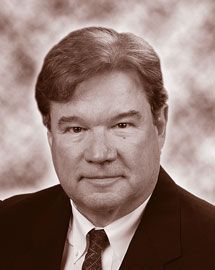 Watch the Video
Watch the VideoJohn Huff worked for two pioneering drilling companies: the Offshore Company and Zapata Offshore, before joining Western Oceanic as VP Engineering, Sales and Operations, eventually becoming Chairman and CEO. He worked worldwide, developing a detailed knowledge of offshore operations. This knowledge provided the necessary background when he joined Oceaneering International in 1986 as President and Chief Executive Officer, leading the company to become the premier organization in underwater technology. Oceaneering is the world’s largest operator and manufacturer of ROVs (remotely operated vehicles), intervention tools and specialized subsea products. John’s pioneering technologies provided an array of services to customers
operating in other harsh environments, including deep ocean basins and outer space. Oceaneering’s Advanced Technologies Group applies tools and techniques from the offshore and subsea support business to other industries, including specialized submarine repair, deep ocean search and recovery, as well as most of NASA’s extra vehicular activities tools (EVA) and the latest generation space suit.
Hughes, D. Michael "Mike" (1999)

Mike Hughes began his career as a hands-on diver in the Gulf of Mexico in the early 1960s. As his business, World Wide Divers grew, he teamed up with Lad Handelman's California Divers, and a Canadian firm, Can-Dive, forming Oceaneering International in 1969 and serving as Chairman of the Board. Under his leadership, Oceaneering contributed to many innovations in underwater technology ranging from hand-held sonar to ultra-sophisticated ROVs as applied in drilling, construction and production operations. These innovations have had a major impact on the offshore industry. As an innovator, entrepreneur and diving industry leader and pioneer, Hughes played an indispensable role in advancing offshore development.
Jonkman, Fredrik Johan (2000)
 Watch the Video
Watch the VideoFrederik Johan Jonkman was born in Amsterdam on January 31, 1927. Knighted by Queen Beatrix for his lifetime of service to the marine industry, Jonkman designed the dry transport system employing submersible barges. During his career with Wijsmuller Ocean Towage and Salvage Company, he rose to Managing Director. As owner and President, he founded I.T.C. Holland Heavy Lift in 1973. Under Jonkman's leadership, the world's first dry transport of a totally constructed jackup rig on a submersible barge was engineered and towed by an ocean tug from Ravenna to Dar es Salaam in 1973. This revolutionary accomplishment proved to the industry that very large drilling rigs could be transported in a safe and quick manner.
Jourdan, Andre P. (2014)
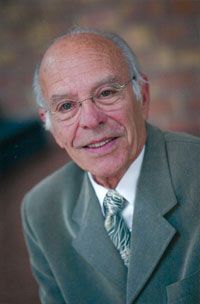 Watch the Video
Watch the VideoAndré P. Jourdan graduated from the Marseille Engineering School in France and began his career in 1964 with a drilling company. He joined Elf Aquitaine in 1969 as drilling engineer. In 1980 he integrated the R&D department and was given the leadership of the “Horizontal Drilling Research Project”. In 1982, the first industrial horizontal well was drilled offshore in the Rospo Mare field in Italy. With a 600m horizontal section and a considerable increase of oil production, this world premier attracted the interest of the oil industry. Later on, André was loaned to other operators to serve as consultant for their first offshore/onshore horizontal well in USA, UK, India, Nederland and Norway. In 1990-1991 he was SPE Distinguished Lecturer and in 1991 he received the prestigious SPE “Drilling Engineering Award”. Through his field experience, his numerous publications and conferences, André has been fully involved with Elf Aquitaine accelerating the worldwide acceptance and development of this technology. By improving productivity and drainage area per well, it is used today as a means to achieve the best economical and technical reservoir management strategy.
Karcher, PhD, John Clarence (1999)

John Clarence Karcher is credited with developing new instrumentation and interpretation techniques that made reflection seismology a practical and economical exploration tool. Working for Geophysical Research Corporation, he successfully found and mapped salt domes on the Gulf Coast. This led to the first offshore use of seismic by Louisiana Land & Exploration Co. in 1928. In 1933, Karcher and Everett DeGoyler were the first to map the deep-seated Old Ocean dome in Texas, one of the largest discoveries of oil and gas condensate ever made on the U. S. Gulf Coast.
Koomey,Paul C. (2003)
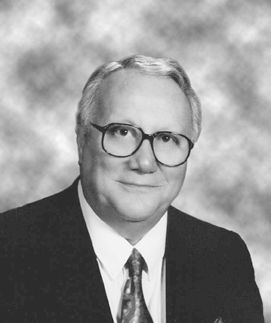 Watch the Video
Watch the VideoPaul Koomey built successful manufacturing, sales and service organizations by seeing the needs of his clients, the rig contractors, and using his technical skills and innovation to develop products to fulfill them. Beginning his career as an engineer at Stewart and Stevenson in 1950 he conceived the idea of the Koomey system of blowout preventer controls which was immensely successful and became a worldwide standard. For a time “Koomey” became the generic term for offshore and land BOP controls. In 1979 he started his own company to manufacture an innovative line of blowout preventers, BOP control units, water makers, subsea control units and related equipment.
Laborde, Alden J. "Doc" (1998)
 Watch the Video
Watch the VideoAfter graduating from the U.S. Naval Academy and serving in World War II, Doc Laborde entered the offshore industry during the post-war boom in the Gulf of Mexico. By applying his naval training and experience to numerous practical engineering problems facing the emerging industry, he helped create the new technologies needed to drill offshore and founded the companies needed to implement these technologies. He is best known for the design and construction of Mr. Charlie, one of the first submersible rigs, and the Ocean Driller, one of the first semi-submersibles. He also organized ODECO, a leading company in mobile drilling, and with his brother John, Tidewater Inc., a leader in offshore supply boats.
Laborde, Sr., John (2005)
 Watch the Video
Watch the VideoFundamental to the success of the early offshore industry was safe, dependable marine transportation and supply. John Laborde, Sr. recognized the special requirements of the industry and led in the development of a vast fleet of fit-for-purpose vessels that serve the industry to this day. In 1956, he headed Tidewater Marine Service with two vessels, and led the company for the next 40 years, growing it to more than 700 vessels in 1994, when he retired. Rigs had to be supplied with drilling mud, cement, water, spare parts, groceries and people, all of which required transport. Initially, surplus World War II vessels, wooden fishing boats, shrimp trawlers, oyster luggers, and tugs and barges were used. The development of the fit-for-purpose supply boat was a key technology in the development of offshore oilfields. Tidewater Marine Service, under the leadership of John Laborde and Alden “Doc” Laborde, developed the concept of a purpose-built boat using a bow wheelhouse and a long flat after deck that became the standard for Offshore Supply Vessels (OSVs) from 1955 to the present. Reflecting this new design, the Ebb Tide was the first in the fleet of industry giant Tidewater Inc., which John Laborde developed into the largest fleet of offshore supply vessels in the world. John P. Laborde, Sr. graduated from Louisiana State University with BA and JD degrees. He is currently Chairman of Stewart Enterprises, Inc., VT Halter Marine, Inc., Laborde Marine Lifts, Inc. Laborde Products, Inc., Lab-More Properties, LLC and Laborde Integrated Services, Inc., and is a member of the board of Stone Energy Corporation. He has served on the boards of several other major corporations and is a well-known business and civic leader. In 2000, Louisiana Public Broadcasting honored him as a “Legend of Louisiana” and in 2003, Junior Achievement honored him with the Lifetime Achievement Award.
Langner, Carl G. (2010)
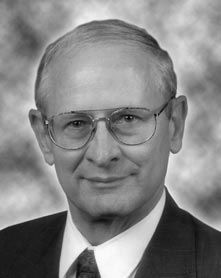
While employed by Shell Oil Company and subsidiaries between 1966 and 1999 Carl Langner worked primarily in R&D related to offshore pipelines and subsea oil production technology. He was also directly involved in the construction of several record-setting offshore pipelines and pipeline repairs. Carl is particularly recognized for his innovative contributions in the areas of analysis, design, and installation of deepwater pipelines and risers (particularly SCRs), subsea flowline connection methods, steel tube umbilicals, and insulated and electrically heated subsea pipelines. He also contributed to a Limit State code for offshore pipelines. Since retiring from Shell in 1999 Carl has provided consulting engineering services to more than 25 companies involved in offshore oil and gas production. He is the author or coauthor of over 120 Shell, OTC and other industry reports and publications as well as author or coauthor of 34 U.S. Patents assigned to Shell Oil Co.
Le Tourneau, Robert G. (1998)

Despite dropping out of school in the eighth grade, Robert Le Tourneau nonetheless used his aptitude for practical engineering to become a pioneer in the creation of the first effective jack-up drilling rig, the Scorpion, which was used by future president George Bush in his initial forays into the Gulf of Mexico with Zapata Offshore Company in the early 1960s. This "straight-legged platform" was a giant step in the evolution of mobile drilling rigs, since it could be towed to site, jacked up on its three legs for drilling, and then jacked down for movement to another site. Le Tourneau, Inc., grew into one of the largest builders of mobile offshore drilling units.
Lee, Griff C. (1998)
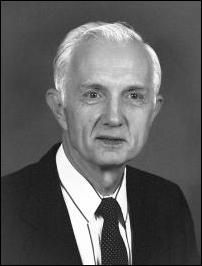 Watch the Video
Watch the VideoGriff Lee entered the offshore industry with a wave of expansion in the Gulf of Mexico in the late 1940s, when the first permanent structures of any sort to be operated in the open sea were designed and constructed. Working for Exxon and later New Orleans-based J. Ray McDermott, he helped develop the first generation of fixed offshore platforms which were prefabricated onshore, taken by barges to their sites, and then pinned to the ocean floor with piles. Since these first initiatives in the Gulf of Mexico, Lee has remained deeply involved in industry affairs, particularly in the creation of effective design standards through the standing committees of the American Petroleum Institute.
Lloyd, Samuel H. (2003)
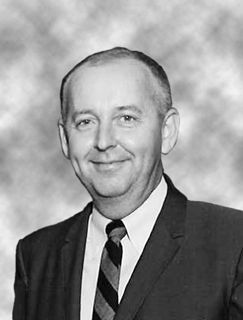
Lloyd joined Salt Dome Production in 1947 after graduating from Missouri School of Mines, and they built several offshore platforms and shallow water offshore rigs. In 1957 Bluewater Drilling Corp. was formed with Sam as President, and Bluewater 1, a space frame, sit-on-the-ocean-floor rig was built at Ingalls shipyard. Shell Oil deemed the rig well suited for conversion into a floating semi-submersible rig, a concept Bruce Collipp had developed at Shell. Under contract to Shell in 1961, Sam’s rig became the world’s first semi-submersible. Sam became an officer with Santa Fe Drilling Company when it acquired Bluewater in 1966. He left Santa Fe in 1971 and formed Atlantic Pacific Marine Corp. where he was CEO until 1977.
Lovie, Peter (2018)
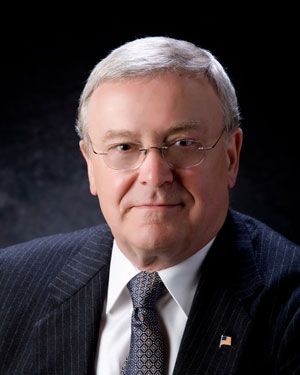
An engineer from Scotland, Peter Lovie immigrated to Houston in 1967 at the age of 29. He started Engineering Technology Analysts, Inc. (ETA), in Houston in 1970. ETA went from nothing to four years later securing a contract to design the two world’s largest jackups, with 508 ft. long legs for North Sea operation. Peter’s team of brainy millennials at ETA had challenged the Big Four jackup designer-builders of the day. Peter’s patent described a leg design with cast steel joints that was lighter and stronger. One of these jackups - Dyvi Beta – is currently still in service. Twenty (20) other ETA designed jackups were delivered from 1976-1982; of these, thirteen (13) are still in service today. Four other established builders utilized ETA’s leg chord design to build twenty-eight (28) other jackups. Peter pioneered subsea processing systems in 1988-1994 – prematurely – then championed floating production, including FPSOs in U.S. Gulf of Mexico, from the arduous 1996-2001 regulatory approval in principle, to developing Jones Act shuttle tanker solutions and 2007’s contracting for the first FPSO in U.S. Gulf of Mexico at the Cascade/Chinook development in 8,300 ft. of water, while employed at Devon Energy.
Lubinski, Arthur (1998)

After fighting with the French resistance in World War II, Arthur Lubinski emigrated to the United States and applied his training in mechanical engineering to the development of improved methods of oil well drilling. During his 25-year career at Amoco, Lubinski utilized advanced mathematical models to solve practical problems such as the prevention of drill pipe buckling through the use of multiple drill collars. After work on Project Mohole and the Scripps Deep Sea Drilling Project, he was responsible for the API's standardization task force for mooring of floating structures. After retiring from Amoco, he served as a consultant for Smith International for another 20 years.
Marshall, Peter W. (2014)

Peter W. Marshall holds Bachelor and Master of Science degrees from the University of Florida, and a PhD (Dept. of Architecture) from Kumamoto University, Japan. In 1970 Peter was awarded the Alfred Noble Prize by ASCE for his paper, “Risk Factors for Offshore Platforms “. This was the beginning of a long and successful effort to properly relate the expected environmental forces to the actual platform resistance. As he worked on this issue, Peter became a recognized expert in welding and the selection of proper steel grades for offshore platforms in various environments. In addition to his design and concept work within his own company, he became an active member and leader in many industry technology committees. The results can be seen in specific standards and codes that are now in common use by the industry, including American Welding Society (AWS), API Recommended Practices, API Specifications, International Standards Organization (ISO) and the International Institute of Welding (IIW). By his personal technical competence and leadership within Shell Exploration & Production, USA, and in many industry committees and forums he contributed significantly to, indeed in many respects he blazed the way for, the successful design and installation of deepwater offshore fixed and floating production facilities in current use worldwide. As an early, effective and long tenured proponent of Reliability Based Structural Design for application to deepwater platform projects Peter was and is a worldwide industry leader in materials selection, welding technology, fracture mechanics and related inspection methodologies. Upon retiring from Shell in 1993, after 32 years, Marshall became Professor, Chair of Marine Design and Construction, University of Newcastle-upon-Tyne, England. He is now Visiting Professor, National University of Singapore.
Martini, Allan V. (2007)
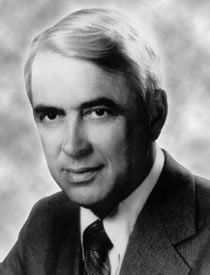 Watch the Video
Watch the VideoRenowned for his expertise in the geology of fluvial deposition, Allan Martini was largely instrumental in helping Chevron, build the largest lease position east of the Mississippi River. Conventional wisdom led many to believe that there were few opportunities for hydrocarbon production there, but Martini proved the experts wrong. He led the development of Main Pass Blocks 40 and 41 oilfields, then followed with Main Pass Blocks 299 and 240. Over a ten-year period, fields developed by Martini were tied with those of Shell for Gulf Coast production leadership. Martini’s keen insight came into play when Chevron acquired the assets of Gulf Oil Corporation and Tenneco. His encouragement helped Chevron management recognize the potential of those assets. Chevron’s continued position as a major producer in the US Gulf of Mexico coastal and shelf areas can be largely credited to the pioneering spirit of Allan Martini.
Matthews, Charles D. (2006)

Charles D. Matthews, a native Texan, served as president of the National Ocean Industries Association (NOIA) from its founding in 1972, until his retirement in 1993. Under his leadership during those 21 years, the organization’s membership grew from the founding 35 companies to over 300 institutions. Based in Washington, D.C., NOIA became the voice of the offshore business. It is the only U. S. trade organization representing exclusively the interests of domestic offshore and related industries before legislative and government regulatory agencies. Charles came to NOIA with some 20 years of Washington experience from direct government employment to lobbyist to trade association management. His extensive knowledge of the workings of government firmly established NOIA’s credibility before congress and regulatory bodies, and the excellent reputation that it enjoys to this day. Following service in the U. S. Army Air Corps from 1942-45, he attended Texas Christian University and, subsequently, The George Washington University in the nation’s capital, earning a BA in government and an MA in government and economic policy from the latter. In addition to his professional talents, Charles was a strict grammarian and an old-world gentleman. Most of all, he was NOIA and NOIA was Charles Matthews. His favorite expression, clearly based on his decades of experience in dealing with government, went straight to the point: “the only time the people are safe is when congress is out of session.”
McAdams, Ronald E. "Mac" (2007)
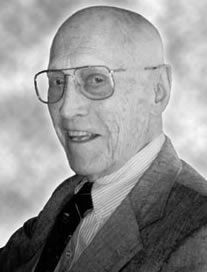
Mac McAdams was a true pioneer in the development of the offshore oil and gas industry. A man of remarkable vision and determination, he led Shell to explore and develop oilfields in water depths exceeding 200-ft, an unheard-of goal at the time. Working as head of exploration for Shell, McAdams put together a highly focused exploration organization supported by a solid base of theoretical and applied research leading to many technical innovations in geology, geophysics, drilling and production. In practice, McAdam’s organization became renowned for its string of successes, setting many water-depth records for new field discoveries in the process. McAdam’s pioneering influence remained long after his retirement. His approach to exploration became a model for Shell, leading to continued success in exploring large and profitable fields sited in increasingly deeper waters, often far beyond technology frontiers supported by conventional wisdo
McClure, Alan C. (2003)

McClure began his outstanding career as a naval architect with a Bachelor of Science from the University of Michigan and a Masters from MIT upon winning a SNAME scholarship. After twelve years at Electric Boat designing the early nuclear submarines, he was called upon by Brown and Root to design the drilling semi-submersible for the Mohole Project… to drill through the earth’s crust to the Mohorovicic discontinuity. Congress terminated the project, but the design became a prototype for many later oil drilling semis. After six years at Continental Oil Co. he started his own company, Alan C. McClure and Associates, run by his son Scott since Alan’s death in 1993. Author of many papers, he was a life member of SNAME and held the Blakely Smith medal.
McDermott, Ralph Thomas (1999)

When he was only 24, Ralph Thomas McDermott contracted to build 50 wooden derricks in Luling, Texas. This contract launched the famous J. Ray McDermott Company, named in honor of Ralph Thomas' father. The company moved to Houston in 1932. Following World War II, the company began building platforms in the Gulf of Mexico. McDermott's company gained an unequaled reputation for proficiency in engineering and construction of offshore drilling and production platforms, underwater pipelines and onshore facilities. The future of the offshore industry was determined by the company's invention and introduction of pile template (jacket) structures.
McGee, Dean (1998)

With his partner, Senator Robert Kerr, Dean McGee built Kerr-McGee into a prosperous Oklahoma-based independent oil company before World War II. When opportunity beckoned offshore in the Gulf of Mexico after the war, McGee and Kerr bet their company's future on the new offshore industry. Among their pioneering ventures was the construction and operation of Kermac 16, the platform which produced the first oil from a structure out of sight of land in the Gulf of Mexico in November, 1947.
Michel, Andrew “Drew” L. (2018)
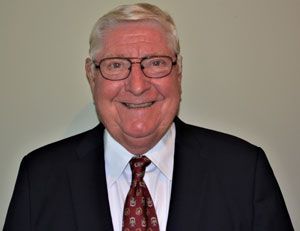
Andrew L. “Drew” Michel, a US Navy veteran, came to the offshore industry in 1966. Building on his USN education and experience, he was instrumental in the development and the deployment of some of the game changing life support, communications and underwater video systems that made it possible for divers to safely move the industry into deeper waters of the Gulf of Mexico (at that time). Though never having worked as a diver, he was inducted into the Commercial Diving Hall of fame for his contribution to diver safety.
Drew’s early underwater video work led to the realization that small ROV systems, previously exclusively military technology, could further enhance diver safety and advance the industry beyond diver depths. His further development and improvements of these earliest ROVs became the forerunners of the robust ROV systems common around the world today. He is considered a pioneer and internationally recognized author, lecturer and general authority on ROV systems and operations and has received many awards for innovative engineering and unique ROV operations. His work has resulted in his being promoted, at a very early age, to vice president in a division of a fortune 50 company, then the ten-year development of his own company that was sold to another publicly traded company. He spent five years as a VP of that company before retiring to spend the remainder of his working life as the ROV subject matter expert for major operators. He is a life member, fellow and past President of the Marine Technology Society; served as chair of the MTS ROV Committee for 20 years and is a senior life member of the Institute of Electrical and Electronic Engineers (IEEE)
Mohr, Harvey O. (2006)

Born in Fredericksburg, Texas, in 1936, Harvey Mohr graduated from Texas A&M University with a BS in mechanical engineering. After military service in which he worked on nuclear aircraft projects, Mohr joined the oil industry where he excelled in developing practical solutions to difficult problems. A prolific author, he has published 38 technical papers and oil industry articles and holds seven US Patents, principally for his innovations in subsea pipelines.
Mohr became a world-recognized authority on subsea technology, even testing some of his early underwater pipeline connector and repair techniques for the North Sea in the family bathtub (filled with ice/salt). He is an expert on materials, using his knowledge to develop equipment that not only works, but lasts for years in extremely hostile environments. Most recently, he was involved with the development of steel catenary riser hang-off systems for deepwater developments for the Gulf of Mexico.
Mohr founded and operated his own company, H. O. Mohr Research & Engineering, Inc., for more than 25 years, focusing on the development and R&D testing of equipment for the worldwide offshore petroleum industry. During this time, he gained notoriety as a forensic expert used in litigation and patents in the area of subsea pipelines. Recently, he has worked on mechanical components and pipeline risers used on floating production SPARS.
Moore, W. Henson (1999)

Through innovation and determination, Henson Moore marshaled the talents of the DeLong Corp. (jackup platform technology), McDermott International (engineering and construction) and Southern Production Co. (drilling know-how) to form the Offshore Company in 1954. The company's drillship, D-1, made its first discovery from a floating vessel in March 1959 in 93-ft of water in the middle of the Gulf of Paria. Moore's unbending will to grow his company resulted in the construction of numerous jackups, drillships and semisubmersibles each with innovative solutions to problems faced by the fledgling offshore industry.
Mosing, Frank (2007)
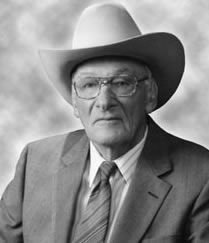
If anyone can claim making his name a “household word” in the oilfield it would be Frank Mosing. His companies, Frank’s Casing and Frank’s International are known worldwide for their competence in casing oil and gas wells, both on land and offshore. Today, Mosing’s pioneering vision continues under the capable guidance of his son and grandson, Donald and Keith Mosing respectively.
Mosing was born in Oklahoma in 1904 and spent many tough years laying pipelines. Moving to Louisiana in 1934, he was convinced that success lay with hard work and dedication to customer service.
At the same time, Mosing put strong emphasis on technical research, leading to the development of hydraulic power tongs, pipe connectors, wellbore cleanup tools and data tracking systems that added efficiency and safety to company operations. With superior experience, efficiency, service and safety, Mosing built a business that has lasted for three generations.
Noble, Capt. W.D. (2002)

The Offshore Industry has relied heavily upon insurance for ocean towages, location moves and operations for its unusual craft. Early work in the merchant navy and war debris salvage led Captain Noble, a British citizen, to form a company, later called Noble Denton, to act on behalf of vessel owners and underwriters. He advised and approved preparations for towage of almost all of the early rigs. The reputation of the firm was unblemished without a single towage loss for the next 15 years, giving confidence to the underwriters to continue to insure such venture
Odum, Jr., Marvin E. (2011)
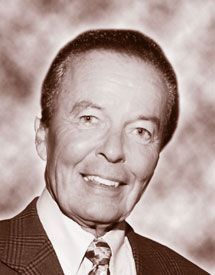
Marvin Odum, Jr., began his oil industry career at Hydril Company during high school. In 1960, his work focused on premium OCTG connection technology in jobs ranging from sales-service through management, including expanding Hydril’s business worldwide. In 1981, he became president of Superior Supply Company’s premium thread division and later ran his own company, Tellin Enterprises. Circa 1984-85, at the suggestion of a Shell Oil associate that a premium flush joint thread connection for large diameter offshore conductor casing (drive pipe) could significantly reduce time and costs of offshore operations, Marvin and partner Paul Pigue founded XL Systems (now NOV) with a small staff, including Tom Blose, an established designer of premium pipe threads. By mid-1986, Blose had developed a so-called flush joint wedge connection for casing from 20-in. to 72-in.OD. XL Systems, with one thread- cutting machine introduced the new connection in the Gulf of Mexico. It was received with wide acceptance due to its distinct operational and economic advantages. By 1997, the company was operating from Texas, Singapore and the Netherlands supplying wedge thread technology worldwide. XL was acquired by EVI, which retained Marvin as its head.
Olsen, Fred (1999)

As Chairman of the Aker Group, Olsen oversaw the transition of Aker from shipbuilding to offshore oil industry operations. Associated with floating drilling operations in the North Sea, Olsen's company built the Ocean Viking semisubmersible in 1965. Building on his experiences, he developed the Aker H-3 drilling vessel, one of the workhorses of the world's semisubmersible drilling fleet. Over 26 H-3s were built during the 1970s, more than any other design. All are still in use, several upgraded to 4th and 5th generation, and have made a significant contribution to the development of deep-water offshore fields.
Last Name, P-Z
Palmer, Robert (2004)
 Watch the Video
Watch the VideoBob Palmer has been a leader in the offshore drilling industry and has spent considerable time and resources meeting and discussing with government officials at the State and Federal levels on the importance of our industry. Until his retirement he chaired Rowan Companies who was one of the key companies in jackup rigs, diversified with an aviation company, and further stepped out into the rig manufacturing business with LeTourneau. Bob is a graduate of Southern Methodist University starting at Rowan in 1953 and working his way up through the ranks. He became President of the Rowan Offshore Drilling Company in 1969. In August of that year Rowan ordered their first offshore rig, a jackup that went to work in Nicaragua for Shell in May 1970. Bob became CEO in 1972. He guided Rowan through its growth in the offshore drilling contracting business, diversified into aviation, and later into rig building through the acquisition of LeTourneau. He was quick to emphasize safety with some of the early behavior-based programs. Bob Palmer provided leadership in industry and government serving as President of IADC, Chairman of National Ocean Industries Association, Director of API, and a member of the National Petroleum Council. Bob’s 1982 election to be the President of IADC surely reflects the fact that he was recognized by his peers in the offshore drilling business as one of their earlier leaders.
Paramore, Ed (2006)
 Watch the Video
Watch the VideoEd Paramore was born in Chickasha, Oklahoma, on the 1st of August 1916. Following the example of Horatio Alger, Paramore realized the benefits of perseverance and hard work. Starting as a truck driver at Halliburton when he was twenty, he rose to the rank of Vice Chairman of the world’s largest oilfield service company before his retirement in 1981. Assigned to the company’s New Orleans office, Paramore performed the first successful offshore well treatment. Subsequently he led the development of a complete line of well servicing equipment and techniques specifically designed for offshore. Recognizing that the offshore industry’s growth could only be sustained if careful stewardship of the offshore environment became an integral part of operations, Paramore founded and managed the Clean Gulf Consortium, a non-profit cooperative alliance of companies whose goal is prevention of environmental incidents and quick response to remediate any that occur. This organization became the model for similar alliances protecting our ocean resources around the world today. Among Paramore’s technical contributions are offshore skid-mounted pressure pumping and cementing equipment, well-testing units, bulk handling equipment, sand control and improved techniques for fighting offshore blowouts and well fires. He consulted with other offshore pioneers to develop specialty well service and supply vessels to serve the industry.
Pease, F. Tim (1998)

Tim Pease is known for his innovative work in designing a variety of mobile drilling vessels for The Offshore Company, which became Sonat Offshore Drilling Company and later Transocean. His leadership in the development of design parameters in jackups and drillships led the way to a large number of solutions improving the safety of offshore operations. His work on turret-moored drillships helped create a new technology that proved highly effective proceeding into deepwater exploration. Many of today's engineering leaders developed their knowledge and skill under his tutelage at the Offshore Company. He also contributed to the development of design codes (ABS/USCG) for drilling vessels in the formative years of the offshore industry.
Rabinowitz, Philip (2008)
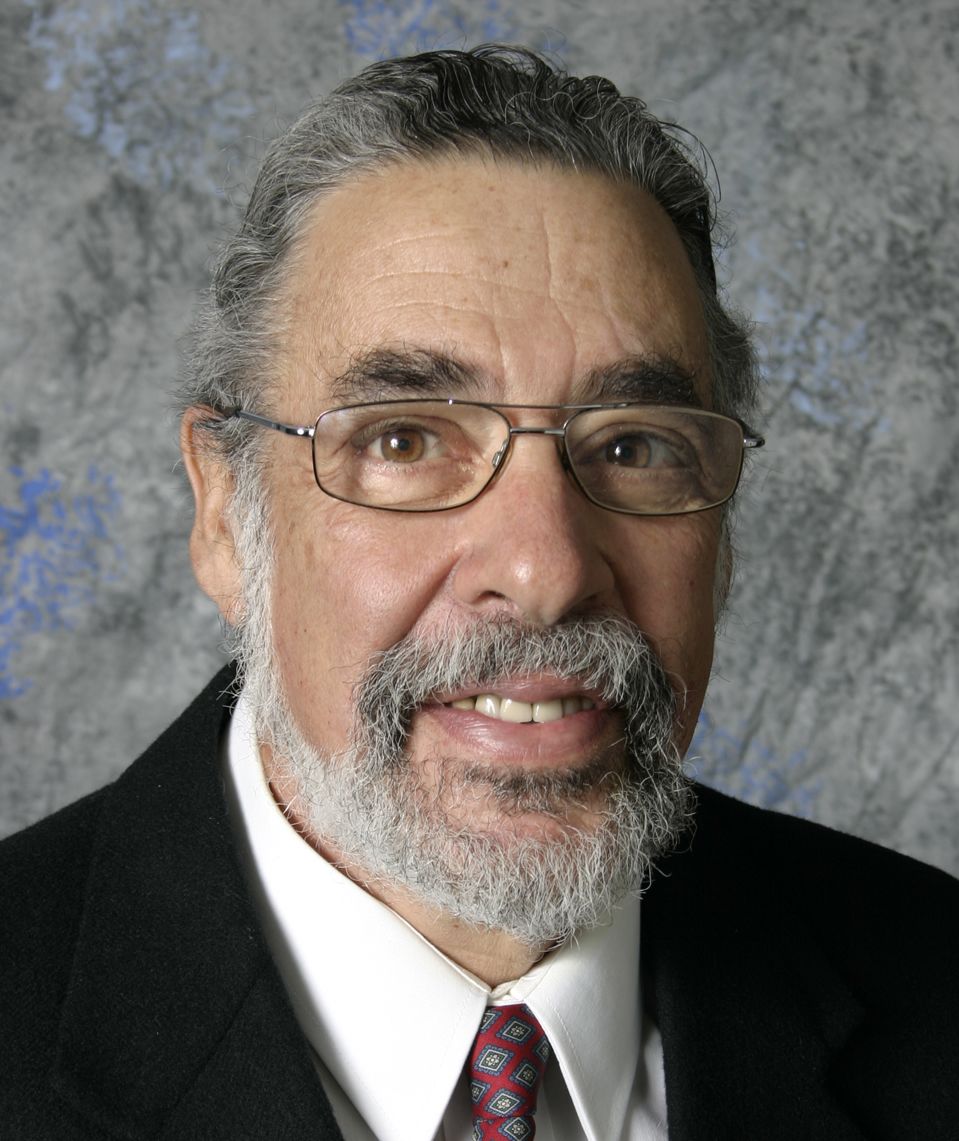
Dr. Philip D. Rabinowitz is a Professor of Geology & Geophysics and Oceanography, and holder of the D. B. Harris Endowed Chair in Geophysics at Texas A&M University. His scientific studies focused on evolution of continental margins, plate tectonics, mapping of the deep ocean floor and ocean technology. In the course of Dr. Rabinowitz’s research, he has spent several years aboard scientific research vessels. He has been Chief Scientist on more than 15 expeditions, including those operated by Columbia University, University of Capetown, the Deep-Sea Drilling Project, and the Ocean Drilling Program. Dr. Rabinowitz had a pivotal role in the formation of and bringing the Ocean Drilling Program (ODP) to Texas A&M University in 1983. He served as the inaugural Director of the ODP. At the time, this program was the largest and most prestigious basic international research program for the earth and ocean sciences. For all his work as Director, the National Science Foundation presented ODP a Meritorious Service Award, the first of its kind ever awarded.
Rankin, John L. (2000)

With his bright red coat signaling a banner sale, John L. Rankin presided over offshore lease sales for more than 25 years. He guided the leasing program from its infancy to its position as a widely respected model for minerals management and conservation of our energy resources. The "Red Jacket" tradition is now a standard among Rankin's successors. In 1982, when the Minerals Management Service was created by combining the offshore leasing, operational, and stewardship functions of the Bureau of Land Management and Conservation Division of the U.S. Geological Survey, Rankin was selected as the first Director of the Gulf of Mexico Region. He held that position along with the moniker "Mr. OCS" until he retired in 1985.
Regan, Jack (2005)

Jack first worked at his family’s oil tool company when he was eleven years old as a night watchman during the depression. He studied engineering at Louisiana State University and enlisted in the Navy, December 1941. He was commissioned as an officer and received his aviator wings in July of 1943. Jack was stationed in the Pacific at the end of World War II. Following the war, Jack returned as a salesman for the California based Regan Forge and Engineering Company. The company produced numerous parts and pieces of equipment to support the oil industry. In the 1950s, Jack Regan, then VP of sales for the company, observed early efforts to drill and produce under the sea and recognized the limitations of current technology. He foresaw the need for diverless subsea systems to permit safe drilling in waters beyond the depth of conventional deep-sea divers. Jack and his team of skilled engineers along with sales and service hands developed an impressive list of subsea drilling and completion systems including the first drilling riser tensioning system, a pressure-balanced ball joint connector, a diverless subsea Christmas tree, drilling riser with integral kill and choke lines and an under-the-ice subsea production tree. The diverless trees featured acoustic release/reentry buoys, J-lay flowline connections and vertical stingers, through-the-flowline downhole tools, remote guideline connect and release tools, a through-flow subsea wellhead system and an emergency production riser release connector. The Regan Diverter System, which became a standard piece of equipment on floating drilling vessels throughout the world. Jack led the team that developed a total drilling and completion system for 2,400-ft of water integrated with an ROV for primary completion and emergency shutdown operations. As a result of his vision and perseverance, his company, then named Regan Offshore International, was recognized worldwide as the leader in offshore enabling technology, subsea drilling, completion, and production equipment. Jack retired in 1982 and at that time he was President of Regan Offshore International, and a Director of Hughes Tool Company.
Reinhold, Walter B. (2006)
 Watch the Video
Watch the VideoWalter B. (Beni) Reinhold spent his entire working career in the drilling industry, and was involved in the offshore industry from its earliest days. Working in his father’s small oil tool company, Abegg & Reinhold, he became known throughout the oilfield as an innovator and gradually transformed the company into the leading manufacturers of offshore drilling equipment. Beni held steadfast to the vision that offshore drilling would greatly benefit from automation. Convinced that major improvements in offshore safety and drilling efficiency would result from automation, he focused his efforts on promoting a steady stream of offshore technology from top drives to automated pipe-handling equipment. In the course of his career, he created Varco International, one of the world’s leading developers and manufacturers of offshore equipment. Almost all of today’s offshore fleet is equipped with Varco’s equipment.
Rey-Grange, Andre C. (2007)
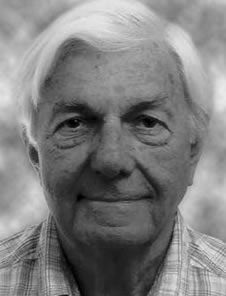 Watch the Video
Watch the VideoAfter earning MS degrees in civil, mechanical and petroleum engineering, Andre Rey-Grange began his career as a drilling engineer. In 1964, he joined Neptune, and led a joint research program that resulted in the design and construction of the first Pentagone moored semisubmersible drilling rig, intended for the harsh sea environments of the North Sea. The Pentagone design was chosen because it smoothed out motion from wave action and provided good damage stability in case one of the pontoons became flooded. Its innovations include the cable mooring system (instead of chains), the cellar deck arrangement, the heave compensation systems for both hook and riser, the blowout preventer and riser systems, and the power plant. In more than 20 years of service in extreme environments, the Pentagone rigs outperformed all other designs in their ability to stay on station and keep operating in adverse weather.
Richardson, George. (2014)
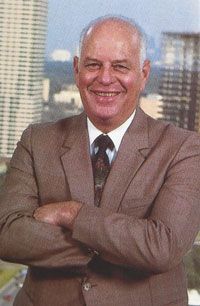
George Richardson joined The Offshore Company (now Transocean, Ltd.) as the Chief Engineer in 1955. At the time, the worldwide movable offshore fleet consisted of only 3 jackup rigs and 5 submersibles.
In 1956, George directly managed the construction of new rigs. Between 1956 and 1966, Richardson built 2 turret-moored drill ships and 12 various-sized jackups. During the following nine years, Richardson oversaw the construction of 4 more turret-moored drillships, 9 Jackups and 2 semisubmersibles. In addition, The Offshore Company also licensed the construction of 15 or more cantilever jackups. In 1976 Offshore Magazine named The Offshore Company the world’s largest drilling contractor. Much of this growth from the edges of the Gulf of Mexico to water depths over 3,000 feet was the result of George Richardson’s perseverance, direction and ingenuity. As an example of George’s creativity, in early 1961 he foresaw that water depth for jackup drilling rigs was limited and decided to investigate the possibility of using a shipshape hull that could always head into the seas thus minimizing wave induced motion. At that time, he conceived the idea of using a central mooring turret that would moor the vessel over a fixed position on the ocean’s floor, while permitting the vessel to be rotated by bow and stern thrusters in order to maintain the most favorable heading. The concept essentially provided all the favorable vessel motion characteristics of dynamic positioning without the need of positioning thrusters and the not completely reliable positioning control system.
Rike, Jim (2009)
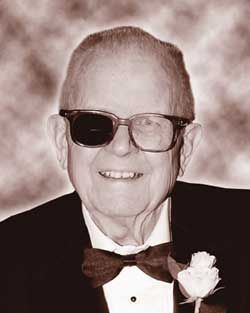 Watch the Video
Watch the VideoAfter writing the first coiled tubing patent memorandum in 1959, Jim proved the feasibility of coiled tubing well interventions with the concept of “managed fatigue.” He has several patents in coiled tubing technology.
During his career with Humble Oil & Refining Company, he played a key role in the development of many other offshore drilling, completion and workover techniques. Since 1970 Rike has worked as a consultant training thousands of professionals throughout the world via seminars and short courses. He has authored many technical papers, obtained 14 patents, served, or chaired many technical committees and sessions, received countless awards and has been an international ambassador of upstream oil and gas technology to the world.
Rodrigue, Myron (2012)
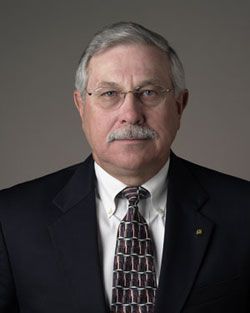 Watch the Video
Watch the VideoA native of Thibodaux, Louisiana, Myron Rodrigue’s career path took him from Scotland to Dubai, and most significantly for the offshore industry, to the US Gulf Coast. As a young engineer with McDermott in the 1970’s, Myron was selected to be Project Engineer for the record-setting Cognac platform project. His pioneering innovations drove the fabrication engineering, load-out and installation of this mega project. He adopted the first high-tech measuring technique to build large fixed platform legs based on uniform temperature settings of the steel. Myron also worked on Shell’s Boxer platform and the topsides for Conoco’s Hutton TLP, the world’s first tension-leg platform, in the North Sea. In 1985, Myron joined Gulf Marine Fabricators, a subsidiary of Peter Kiewit Sons, to manage the Bullwinkle project in Ingleside, Texas. The Bullwinkle jacket project, one of the tallest fixed platforms ever constructed and weighing 50,000 tons, established Gulf Marine as one of the largest industrial enterprises in the Gulf Coast area. In 1991, Gulf Marine entered into a joint venture with Norway’s Aker Maritime to become Aker Gulf Marine. During this time, Myron was involved with some of the major construction work for tension-leg platforms in deepwater including Shell’s Mars and Ram Powell platforms. In 2001, Kiewit sold its interests in Aker Gulf Marine, and established Kiewit Offshore Services with Myron Rodrigue at the helm as President. Myron led the development of Kiewit’s 13,000 ton Heavy Lift Device used to lift and integrate modules on to other major projects such as BP’s Thunder Horse, Atlantis, and Enterprise’s Independence Hub. Kiewit Offshore has become one of the leading offshore construction firms in the industry and continues to attract major deepwater business, as well as defense-contract work.
Safarov, Yusif Ali Qulu Oglua (2004)

Yusif Safarov was Deputy Head of the Exploration Drilling Trust which was responsible for determining exactly where they should drill. He co-led the team with Dr. Aliyev. He was the designer of offshore platforms in the Caspian. In 1939 Y. Safarov began to study the problems of theory and practice of offshore drilling and as a result in 1944 wrote his University thesis on “Deep Drilling Offshore”. In 1941 he directionally drilled a well in Baku Bay. He was one of the key developers in the offshore multi-sectioned platforms customary in the region. Safarov and Agha Aliyev were responsible for the first drilling 25 miles offshore and the discovery made on November 7, 1949 at a depth of 1100 meters. This island complex later covered 4 miles x 4 miles. One was the Offshore Engineer, the other the Geologist responsible.
Scott, Robert "Bob" W. (2016)
 Watch the Video
Watch the VideoRobert W. (Bob) Scott is a petroleum engineering graduate of the University of Texas. His career in the oil industry with Magnolia Petroleum began in 1947, and later with Gulf Oil. Then he turned to providing information to the oil and gas industry via Gulf Publishing Co.’s World Oil magazine, a job that spanned 45+ years. Included were some 300 articles and columns on offshore and onshore topics in World Oil where he served in varied editorial and managerial positions up to president/CEO of its parent. To keep his readers informed, his technical operating and general coverage of offshore topics from the late l950s onward paralleling the burgeoning growth of that segment of the oil industry. Besides North America, that effort took him, on multiple occasions, to locations off Europe, Africa, the Middle East and Far East. In addition, he has made innumerable presentations on his experiences to industry organizations world-wide. He has also served as secretary of NOIA, is a member of three OEC committees; and is a 58-year member of the Society of Petroleum Engineers. Before his retirement, he held Registered Professional Engineer credentials in Texas and Louisiana.
Serrano, Jorge Diaz (2004)
 Watch the Video
Watch the VideoJorge Diaz Serrano pioneered offshore Mexico in 1959 by founding Permargo. As the first offshore contractor Permargo also operated the NOLA II in a joint venture agreement with Zapata Offshore. In 1976 he was appointed Director General of PEMEX. While at PEMEX he was instrumental in the discovery and development of the Cantarell Field, the world’s second largest offshore field. As a result of his leadership Serrano was the driving force in turning Mexico from an importer to an exporter of oil. He ended his career as Mexican Ambassador to Russia in 1982.
Shatto, Jr., Howard L. (2000)
 Watch the Video
Watch the VideoA world-respected innovator in the areas of dynamic positioning (DP) and remotely-operated vehicles (ROVs), Howard Shatto led in the design of the first subsea wellheads for drilling and production using an ROV (called MOBOT). He conceived the world’s first automatic control for DP on Shell’s Eureka core drillship in 1960. It controlled surge, sway and yaw independently and resolved thruster commands, a procedure followed on the more than 1300 DP systems built since then. Shatto led development of the DP and reentry systems for the Sedco-445, the world’s first DP oil exploration drillship with riser. For the past ten years he has served on the Technical and Engineering Committee of the Joint Oceanographic Institution Ocean Drilling Program.
Siem, Ole Martin (2009)
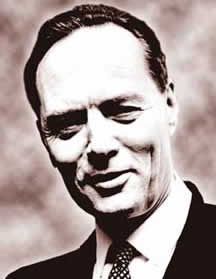
From the base of AS Aker’s Mekaniske Verksteder, the Oslo shipyard founded in 1848, Siem created and became the CEO of the Aker Group in 1957 and became a pioneer in the building of super tankers in Norway. His close relationship with the major oil companies in the US and their North Sea interests allowed him to embark upon a strategy of preparing the Aker shipyards for the future fabrication needs of the oil industry. In 1960, he converted the whaling vessel Thorhovidi into a moored drill ship and renamed it Drillship. This experience moved the Aker Group into the construction of semi-submersibles of ODECO design which led to their own design of the Aker H3 semi-submersible which became a worldwide success. After early retirement in 1970, he formed Saga Petroleum ASA and became its first president and later became the Chairman, President and CEO of Timex Corporation Inc. in the USA. He received the Order of St. Olav of Norway, the Leopold Order of Belgium, and the High Order by the Shah of Iran.
Silas, Pete (2005)

Pete Silas graduated from Georgia Institute of Technology with a degree in Chemical Engineering. He joined Phillips Petroleum Co. in 1953. In 1968 he moved to Brussels, Belgium, and then London England as Senior Operations Officer for Phillips in Europe and Africa. He immediately became involved with the huge Ekofisk development offshore Norway. Under his direction, the multi-structure field development proceeded including construction and installation of the unique Ekofisk Concrete gravity-base structure tank. In conjunction with the successful completion of this project Silas was awarded the Order of St. Olaf, Commander, by the Norwegian Government. Returning to the US in 1977, Silas became Phillips’ VP for Gas and Liquids. He was elected President of the company in 1982, and Chairman in 1985 where he served until his retirement in 1994. Silas is a business and civic leader at local, state and national levels, including service as Chairman of Junior Achievement, National Boys and Girls Clubs of America, the US Chamber of Commerce and the American Petroleum Institute (API).
Silcox, William H. (1999)
 Watch the Video
Watch the VideoBill Silcox joined Standard Oil Company of California in 1942. Starting in 1957, he pioneered the development of a wide range of subsea and shipboard drilling and production systems that extended the industry’s capabilities offshore. Silcox and his team set many records in designing and installing subsea completions, diverless drilling systems and ROV-supported completion systems for deep waters. In the 1970s, he initiated development studies on compliant platforms that resulted in the tension-leg platform concept
Stallworth, Bill (2008)
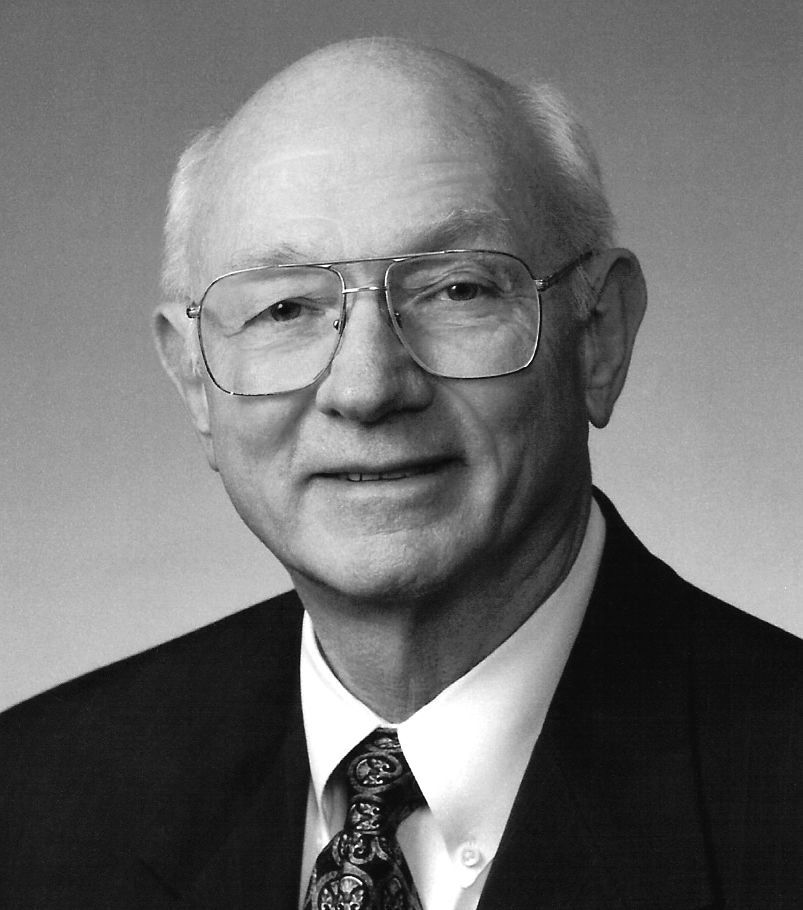 Watch the Video
Watch the VideoAfter graduating from Texas A&M University Bill Stallworth began a long career with Brown & Root principally working on offshore platforms and submarine pipelines. Starting in 1957 with large diameter concrete coated pipelines in Venezuela’s Lake Maracaibo, he moved on to establish concrete pipe coating yards in Brazil and Abu Dhabi. He started his North Sea career as Project Manager for the Ekofisk platforms and then he moved on to be the Project Director for BP’s Forties Field platform program. He then assumed responsibility for Brown & Root’s Eastern Hemisphere marine operations and eventually for all Brown & Root’s worldwide Marine Engineering and Construction Operations. In 1986 Stallworth left Brown & Root and formed Stallworth Interests Inc. and in 1993 became a General Partner in Stallworth Frankhouser & Assoc. In 1997 he helped form TransCoastal Marine Services and served as its Chairman & CEO through 1998.
Sterling, Gordon (2016)
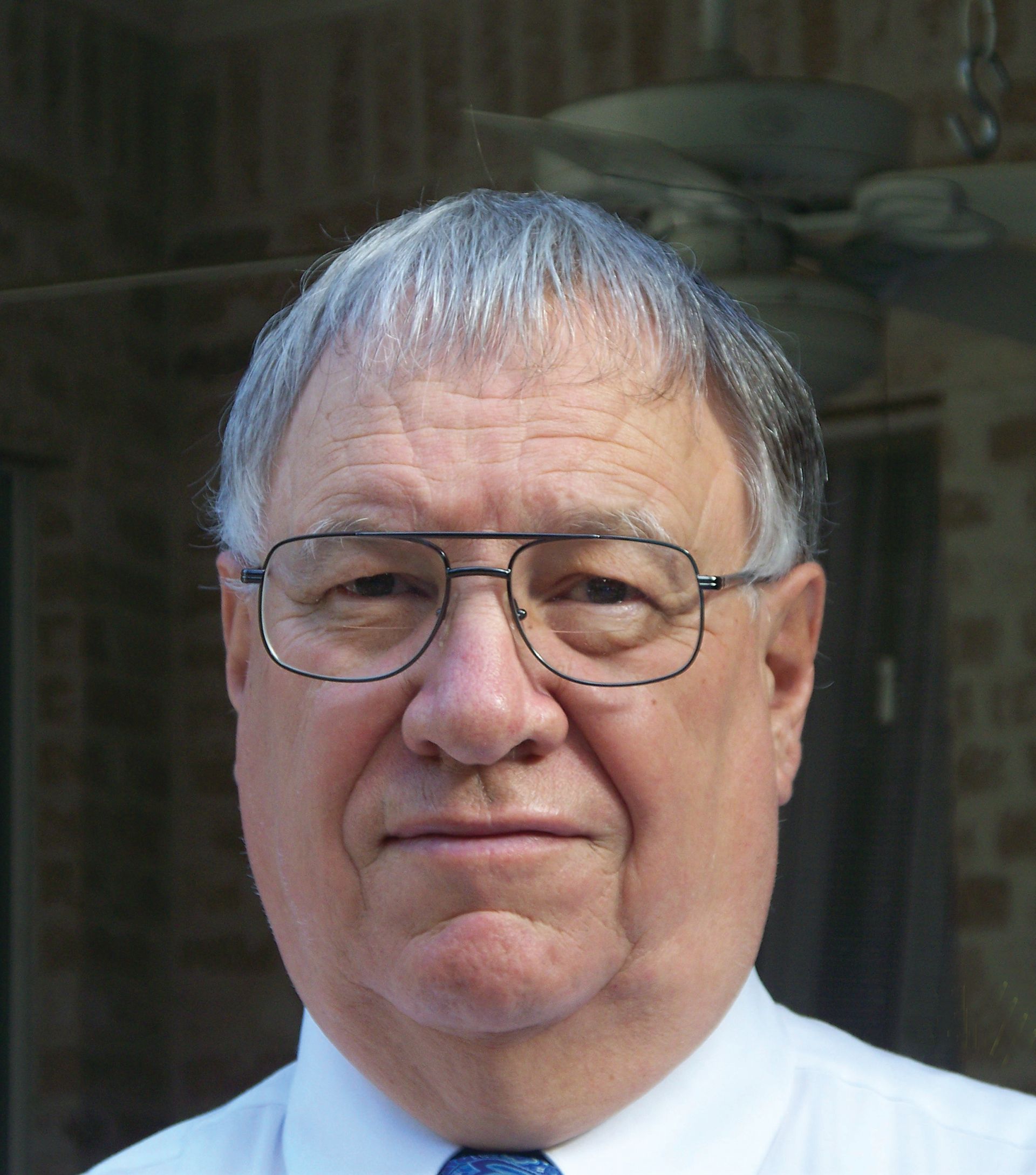
Gordon Sterling received his Master’s degree in Civil Engineering from Lehigh University in 1965 and joined Shell Oil E & P. He was involved in designing, fabrication and installation of well jackets in 40 to 70 feet of water. Gordon led a team designing, and engineering the Cognac platform which was installed in a record water depth of 1,025 feet. After the Cognac project, he became the project manager for the Bullwinkle project, a huge, 50-well, platform built, launched and installed in one piece in the Gulf of Mexico. The single piece jacket weighed 49,375 tons and was installed in 1,353 feet of water. It is still considered to be the largest jacket platform in the world. From 1989 until late 1998, Gordon was responsible for coordinating engineering entities and leading the planning and project management of three tension leg platforms (Mars, Ram-Powell, Ursa) in about 3,000 to 4,000 ft. of water. And later, the design of Popeye and Mensa. Gordon retired from Shell in 2000. Since his retirement, he co-authored a book “Deepwater Petroleum Exploration and Production—A Nontechnical Guide
Stoneman, Theodore Schroeder “T.S.” (2012)
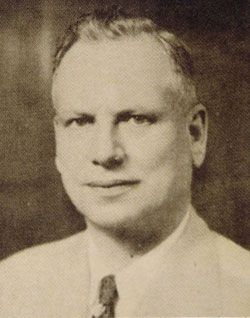
In 1917, T. S. Stoneman began his oilfield career as a draftsman and three years later a landman for the Mid-Continent Petroleum Company in Tulsa, Oklahoma. In 1926, he joined the Danciger Oil & Refining Company in Forth Worth and persuaded the Danciger brothers they should own their own drilling rigs. T. S. Stoneman purchased their first drilling rig with a $5,000 personal check and put it on his expense report. Danciger was acquired by the Southern Production Company in 1950 and Stoneman was retained as Vice President for the Contract Drilling Division. Shortly thereafter, he persuaded the company to acquire a Delong-McDermott joint venture, the Offshore Barge Drilling Corporation, which pursued drilling in the Gulf of Mexico. The merged company was named the Offshore Company and T. S. Stoneman was appointed President. In 1954, the world’s first mobile jack-up was completed, named Offshore Co. No. 51 and was put to work in 47 feet of water. Under Stoneman’s direction, the Offshore Company, now Transocean, became the largest of its kind in the world, with operations off the coasts of Louisiana, Texas, Florida, Mexico, Panama, Venezuela, Trinidad, Gabon, British Honduras, Gabon, Iran and Saudi Arabia. He was largely responsible for the successful introduction of mobile, self-elevating barges that greatly accelerated the development of the offshore drilling industry and provided access to hundreds of thousands of square miles of potentially productive underwater fields which existing equipment at that time couldn’t explore economically.
Storm, James Clay “Jimmie” (2002)

Former oilfield roustabout, James Storm became a partner in Glasscock Drilling Company in 1942 and stayed in drilling until his death in 1991. Together with Bethlehem Steel Corp., Storm designed and supervised construction of Mr. Gus and Gus II, the first rigs able to drill in water depths of 100-ft and 150-ft respectively. From 1962 to 1968 he formed Storm Drilling and Marine Drilling. During this period he developed and patented a slant hole rig to extend lateral reach from a drill site. Between 1968 and 1987 he built and placed in operation seventeen mobile jack-up rigs.
Strange, Booth B. (2010)

Booth B. Strange pioneered a transformation in the offshore seismic business that improved both its efficiency and technological capabilities. In 1956, Strange introduced “turnkey” operations, bidding Western Geophysical’s marine jobs on a per-mile cost rather than a per-month cost. Western’s productivity and profits soared and the company invested in better equipment and added personnel, increasing productivity and lowering the cost per mile. Soon after the introduction of turnkey bidding, Strange persuaded Western’s board to approve gathering data without a contract, on a speculative or “spec” basis. This was in response to growing pressure by some oil companies to do “group shoots.” Rather than each hiring a contractor separately, groups of oil companies hired a single crew and divided the costs among them. The price per increment of data to each company would be substantially less than if the job were done on a proprietary basis. In 1960, Booth Strange took over as president of Western. Strange held several patents, including a system that allowed Western to process 24 seismic channels of analog-recorded data simultaneously, when its competitors still processed each channel individually.
Stolt, Dr. Robert H. “Bob” (2017)
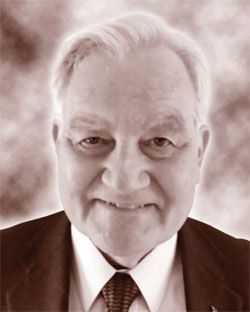
Dr. Robert H. “Bob” Stolt is recognized for his contributions to geophysical technologies including f-k migration commonly known as the ‘Stolt’ migration and other applications of physics scattering theory to the inverse seismic problem. Bob earned degrees in math and physics from the University of Wyoming, then completed his graduate work in 1970 at the University of Colorado with a PhD in Theoretical Physics. He held management positions at Conoco through most of the 1980s-90s while continuing his research and publishing. With the formation of ConocoPhillips in 2003 he helped set up the ConocoPhillips Technical Advisory Board, a team of senior technical advisors. Bob’s recognition includes the SEG Reginald Fessenden Award, Honorary Membership in SEG and GST and the prestigious DuPont Lavoisier Medal recognizing great technical and creative accomplishments and contributions which resulted in a measurable business impact of enduring significance. He retired from ConocoPhillips in 2004 after 33 years of service.
Suggs, Robert L. (1998)

In 1949, Robert Suggs founded Petroleum Helicopters, Inc. using Bell helicopters to support the work of seismic crews working offshore in the Gulf of Mexico and in the marshes of “inshore” Louisiana. Using this new technology that had emerged out of World War II, Suggs provided improved transportation services which found a ready market in the young offshore industry. By giving offshore companies a faster, safer, and more efficient way to transport both workers and specialized equipment, Suggs helped support the industry’s move into deeper waters.
Swoboda, Jr., John J. (2011)

John Swoboda’s offshore career began over 40 years ago creating innovative solutions enabling offshore drilling and production to enter deeper waters. He designed winches to tow pipelines over 25-miles long, assembled on shore, into position offshore. As President of Victoria Machine Works, John pioneered constant tension winch controls, pipelaying davits and stingers, and platform mooring systems. A major contributor to improving safety on offshore rigs, John pioneered equipment such as mechanical racking systems for handling drill pipe, helicopter refueling systems that could be emergency jettisoned overboard, and a stabilized BOP handling system. He also produced the HandiArm, a device similar to a manlift that allows access to the underside of a jack-up drilling rig for maintenance while on location. Another innovation includes the first J-Lay pipeline system in the Gulf of Mexico, a computerized pipe cutting machine for platform fabrication, and integrated tug-barge connections.
Teixeira, Alvare Alves (2013)
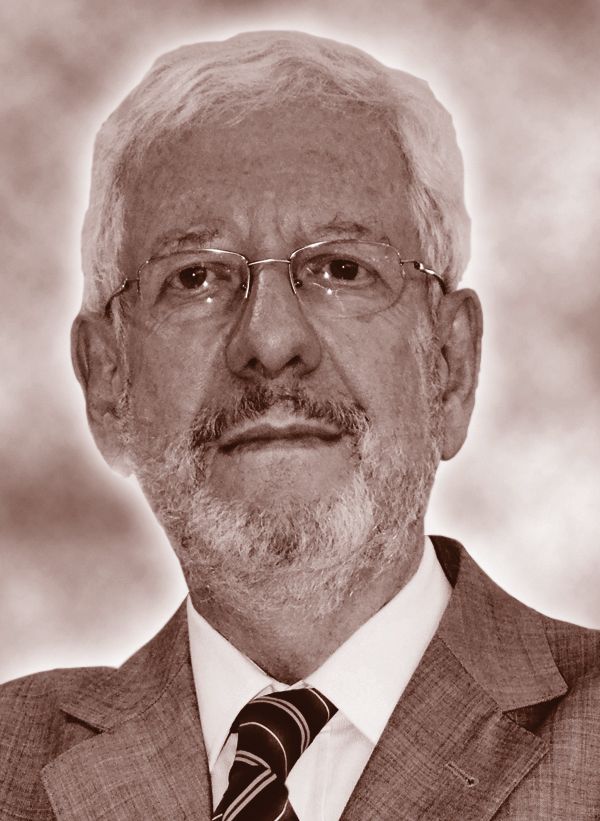 Watch the Video
Watch the VideoFor 35 years, Alvaro Teixeira applied his skill as an engineer and geoscientist to help Petróleo Brasileiro SA (Petrobras) emerge as one of the world’s leading oil producers. His team integrated Geology, Paleontology, Geophysics and Engineering expertise to take advantage of the seismic revolution of the 1960s, which ultimately resulted in the ability to obtain clear seismic images below salt and basalt—targeting the so-called pre-salt sediments. In 1963, Teixeira participated in the pre-salt Carmópolis discovery that remains today as the biggest onshore accumulation of oil in Brazil. Later in his Petrobras career, he was responsible for negotiating several foreign contracts. Perhaps the most notable was the discovery of the giant Majnoon Field in South Iraq, classified as the biggest oil discovery of the 1970s. From 1989 to 1993, Teixeira served as General Secretary of Arpel, an international association of the 17 state oil companies of Latin America plus PetroCanada and Repsol (Spain). He oversaw the privatization of Arpel, breaking the national oil monopoly and paving the way for private companies to enter the region. In the twilight of his career, he worked at the Instituto Brasileiro de Petróleo Gás e Biocombustiveis (IBP) as general secretary, where he implemented the New Petroleum Law which opened the country to private national and international oil companies. Specifically, he addressed the challenges of legal, taxation, environmental issues, and new concession contracts under the New Petroleum Law. IBP is recognized as the most important exploration and production forum in Brazil today.
Vardeman, R. Don (2015)
Watch the VideoDon Vardeman championed successive applications of spar technology for deepwater development, and by his leadership in deepwater mega projects has provided an important example for Project Management in the offshore oil & gas industry. His untiring efforts in technology, academic and business societies, as well as his willingness to mentor colleagues and other young professionals have advanced the entire industry. Vardeman has 40 years of experience in production engineering and operations. Graduating from Texas A&M University in 1975 with a B.S. in Electrical Engineering, he began his career with leadership roles in the development of deepwater fields utilizing spar technology that was first applied at the Neptune field. Vardeman led the project management teams for deepwater developments including the Nansen, Boomvang, Gunnison, Red Hawk and Constitution spars, as well as the Independence Hub semi-submersible production facility. Vardeman’s teams focused on the further use of spar technology, using teamwork, trusting relationships, and the transfer of learnings and knowledge from past to future projects. Vardeman is responsible for eight (8) spar developments and three (3) successive generations of spar technology, while helping to develop tomorrow’s deepwater leaders. In November 2005, Vardeman was named Commander of the Order of the Lion of Finland by the President of Finland for meritorious service to the maritime industry of Finland, where most spar hulls have been built. Currently, he serves on the Engineering Advisory Council at Texas A&M University and formerly served as the Chairman of the Offshore Technology Conference.
Visser , Robert C. "Bob" (2017)
Watch the VideoRobert C. “Bob” Visser was involved with offshore development for sixty years – thirty years with Shell and then another thirty years as an independent offshore consultant. During his career he was involved in a great variety of projects. He pioneered early design and construction of platforms and pipelines in the Gulf of Mexico, conceived harsh-weather systems to support floating drilling offshore the US West Coast, managed design and installation of innovative platforms and pipelines to withstand ice and currents in Cook Inlet, Alaska and managed the development of the heavy oil Beta field offshore California.
Wallace, John C. (2011)
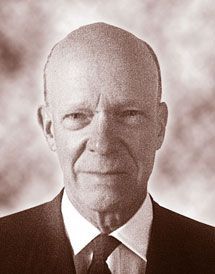
John’s innovative skills have benefited the offshore energy industry in the form of a forty-year career in bank financing, contracting risk assessment, and the sale and purchase of corporate and marine assets. His offshore career began in 1968, with the conversion of a whaling ship into an offshore drilling vessel chartered to Amoco in Norway. Later, John was a key team member responsible for the development of an 18-berth supply base in the Shetlands used by the major oil companies. He co-developed the use of small open hatch bulk carriers transporting pipeline from fabricator to supply base. John was the responsible director for the formation of AOC International in Aberdeen for the hook-up of the Shell Brent D platform and subsequent hook-up, modification and maintenance of platforms in the North Sea and the Northwest Shelf of Australia. In 1989, the British government privatized the Harland and Wolff shipyard in Belfast, Northern Ireland. John negotiated the privatization for the majority interests and was involved in directing the company to specialize in offshore construction and modifications of FPSO’s and drilling rigs.
Watkins, Bruce J. (2013)
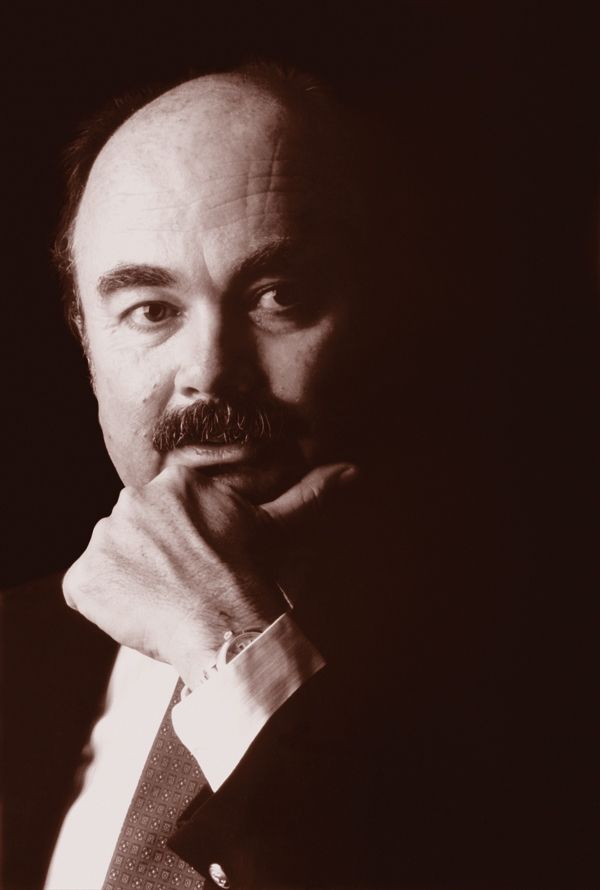
Bruce Watkins graduated from Cal Tech with a straight “A” average in 1954 and went to work for Shell Oil Co. in 1955 working on the secretive Manipulator Operated (MOBOT), which was the forerunner of ROV development. Besides working on the MOBOT he also worked on “diverless” wellheads and Christmas trees that would work with the MOBOT. He was the project engineer for one of the first floating offshore wells drilled in the Alaskan Cook Inlet but after 4 years with Shell developing offshore technology during its infancy, he joined Regan Forge and Engineering as Chief Engineer in San Pedro, California. Following his love of offshore drilling he helped lead the company to invent dozens of ideas and products. During his career, Bruce developed over 60 US patents starting from his Shell days through to his death in 2000. Notable designs and developments with many “firsts” included subsea wellhead systems, subsea Christmas trees, hydraulic wellhead connectors, remote guideline reestablishing systems, concentric tubing hangers, automatic and emergency marine riser release systems, jackup and floating diverter systems, numerous marine riser designs, and metal to metal subsea sealing technology, along with a host of other design innovations that have become standards in the offshore drilling and completion industry. Nicknamed the “Wizard” for his creative mind and vast knowledge, he eventually became President of Regan Offshore and then with new ownership under the name of Hughes Offshore, he remained President until 1985 when the company was merged. Bruce worked as a consultant until he joined Dril-Quip in 1988. He headed up the company’s New Product Development section where he did what he loved the most, designing equipment. Bruce implemented improvements on his own existing products, continued generating a steady stream of patents and invented new products for the company. Bruce was Dril-Quip’s Director of Product Development for 12 years. With one of the sharpest minds in the industry along with his quick witted personality, Bruce was involved in the offshore oil and gas industry from its infancy. He was a pioneer in the development of drilling and production systems used offshore and is known as the “father” of many equipment standards used by the industry today.
Weidler, PhD, Jay B. (1998)

When he began work for Houston-based Brown & Root in the 1960s, Jay Weidler joined an industry facing new challenges as it sought to extend the technology originally developed in the Gulf of Mexico to harsher offshore environments around the world. Weidler was a pioneer in the computer-assisted design of production platforms capable of operating in the extreme temperatures and ice floes of Alaska and the treacherous winds and waves of the North Sea.
Williams II, C.R. “Charlie” (2014)
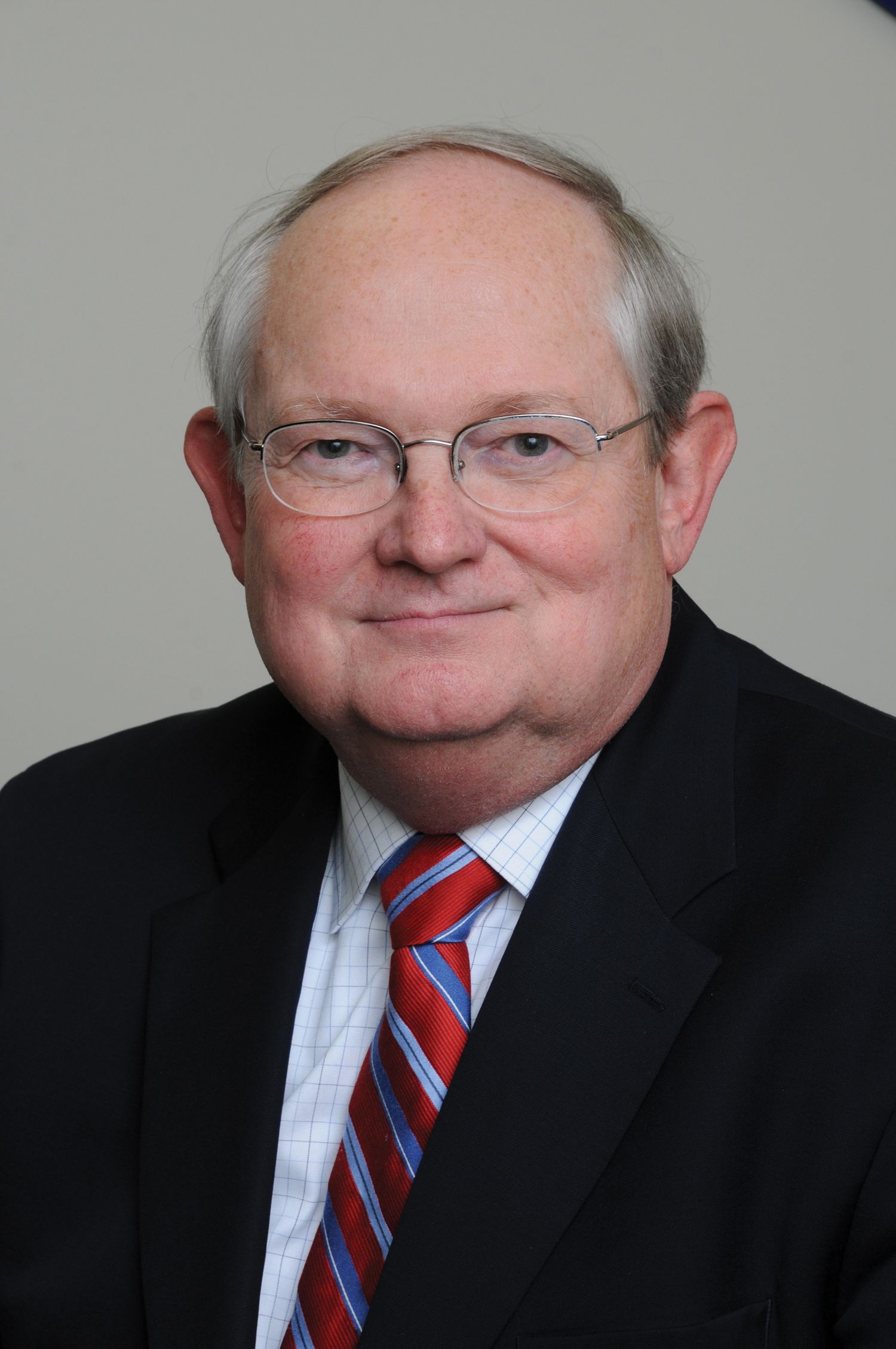
After a 40 year career at Shell, Charlie Williams retired in 2012 to become the Executive Director of the Center for Offshore Safety (COS) – an industry association entirely focused on safety management. Charlie led the creation of COS and received the OTC Special Citation plus the SPE HSSE Award for this work. Charlie joined Shell in 1971 following graduation from the University of Tennessee with a degree in Mechanical Engineering. He achieved numerous senior positions and in 2005 was appointed Chief Scientist which he held until retirement. Charlie’s work focused on technically challenging well completions and drilling. This included contributions to all Shell Deepwater projects. Notably, he developed high rate/high ultimate completion systems and developed confidence that world class production was possible. He served as VP Hurricane Recovery for Shell – including reconstruction of the Mars TLP. The project was awarded the NOIA “Safety in the Seas Award”, UK Energy Institute Award for Technology, and Offshore Engineering Project of the Year. He also received the US DOI Corporate Citizenship Award for resolving the mooring failures that occurred during the hurricanes. Charlie chaired the Industry Task Force for Subsea Well Control and Containment and served on the BSEE OESC FACA. He led the establishment of the Marine Well Containment Company. Charlie’s professional affiliations include being a life member of SPE and chair of many API committees. Charlie Williams’ many contributions have been significant in establishing Shell as a leader in technology and safe and responsible developments around the globe. Charlie is respected and recognized throughout industry for his commitment to safe operations and ability to make technical contributions.
Wilson, Richard O. "Dick" (2000)
 Watch the Video
Watch the VideoDick Wilson successfully designed and installed platforms and pipelines in the world’s harshest environments. Starting with platforms in the Gulf of Mexico and Lake Maracaibo, he graduated to pipelines in Brazil. He assisted Zapata in drilling the first producing well from a floating system. Wilson played a critical role in developing Brown & Root’s marine construction business in the North Sea, growing the organization from a single individual to 8000 people in 13 years. He led developments from the southern gas sector through the major oil fields at Ekofisk, Forties and Frigg. After leaving the North Sea he assisted offshore development in the Bay of Campeche enabling Mexico to increase its oil production by two million barrels per day.
Wood, Sir Ian (2008)
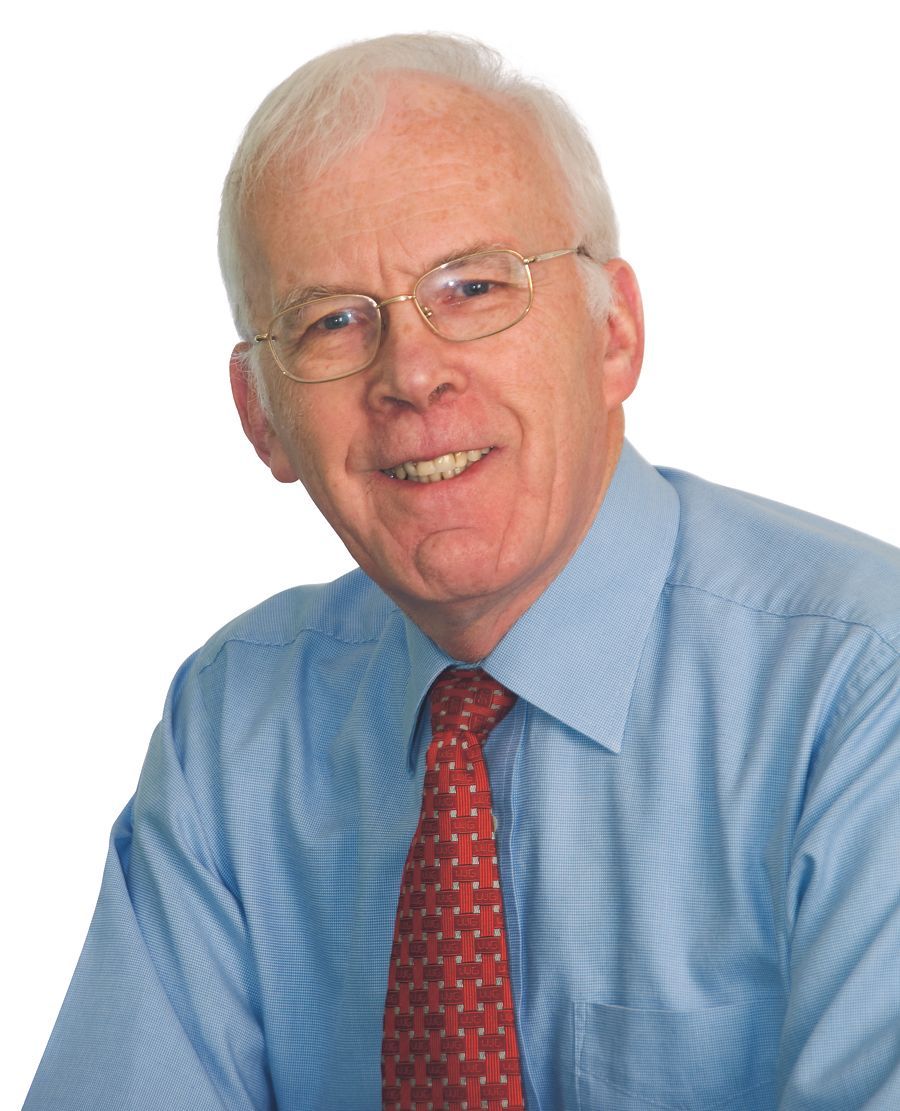
When oil was discovered in the central North Sea in 1969, Aberdeen became the operational and supply base for the UK hydrocarbon industry. Ian Wood joined the Aberdeen-based family business John Wood & Son after graduation from Aberdeen University in 1964. Under his leadership, John Wood Group PLC was created and became the United Kingdom’s largest energy services company, with market-leading positions in the UK, US and globally. Ian has been instrumental in taking best-practice solutions from the UK and the US to the rest of the world, and Wood Group now operates in 46 countries with over 27,000 people. Sir Ian has played a most important part in promoting British industry in the energy sector by serving in many positions. Among these, Joint Chairman of the Oil & Gas Leadership Team, a member of PILOT (a joint government oil & gas industry initiative), Chairman of Scottish Enterprise Board and of the British Trade International Oil & Gas Export Board. He was awarded the CBE (Commander of the Order of the British Empire) in 1982 and a Knighthood by HRH Queen Elizabeth II in 1994.
Zingraf, H.L. "Duke" (2000)

A prolific inventor, Duke Zinkgraf provided practical solutions to the problems of dynamic positioning (DP) of offshore rigs, including the world’s first DP coring vessel, the Eureka. He was intimately involved in the design and construction of the SEDCO 445, the world’s first DP vessel used to drill exploratory wells with a riser and subsea BOP. He was also actively involved in building the SEDCO 709, the world’s first DP semi-submersible rig. Working for The Baylor Company, Zinkgraf was instrumental in adapting the eddy current current brake to the drilling industry and was the first to convert rig power from AC to DC to provide higher efficiency. He also assisted Varco with the design of the top drive system.


